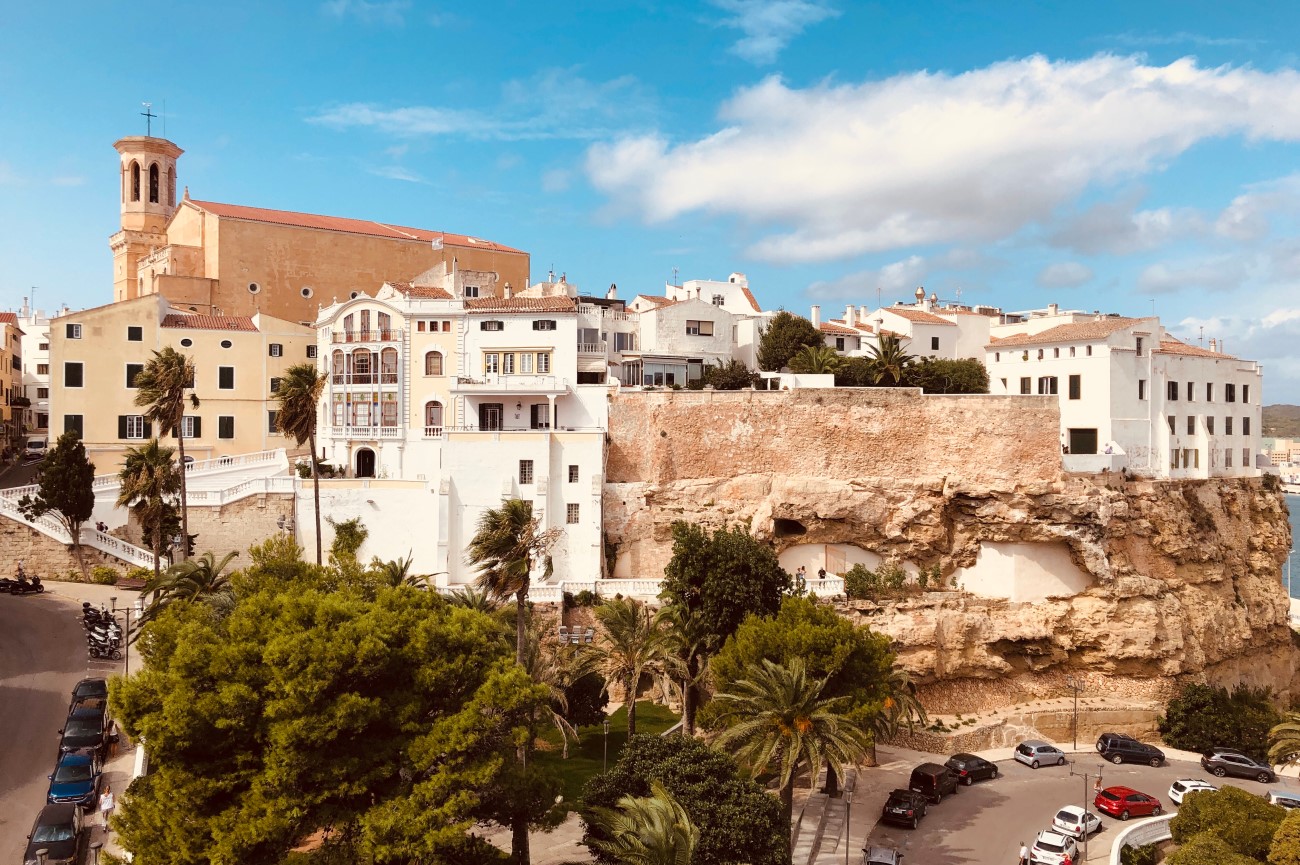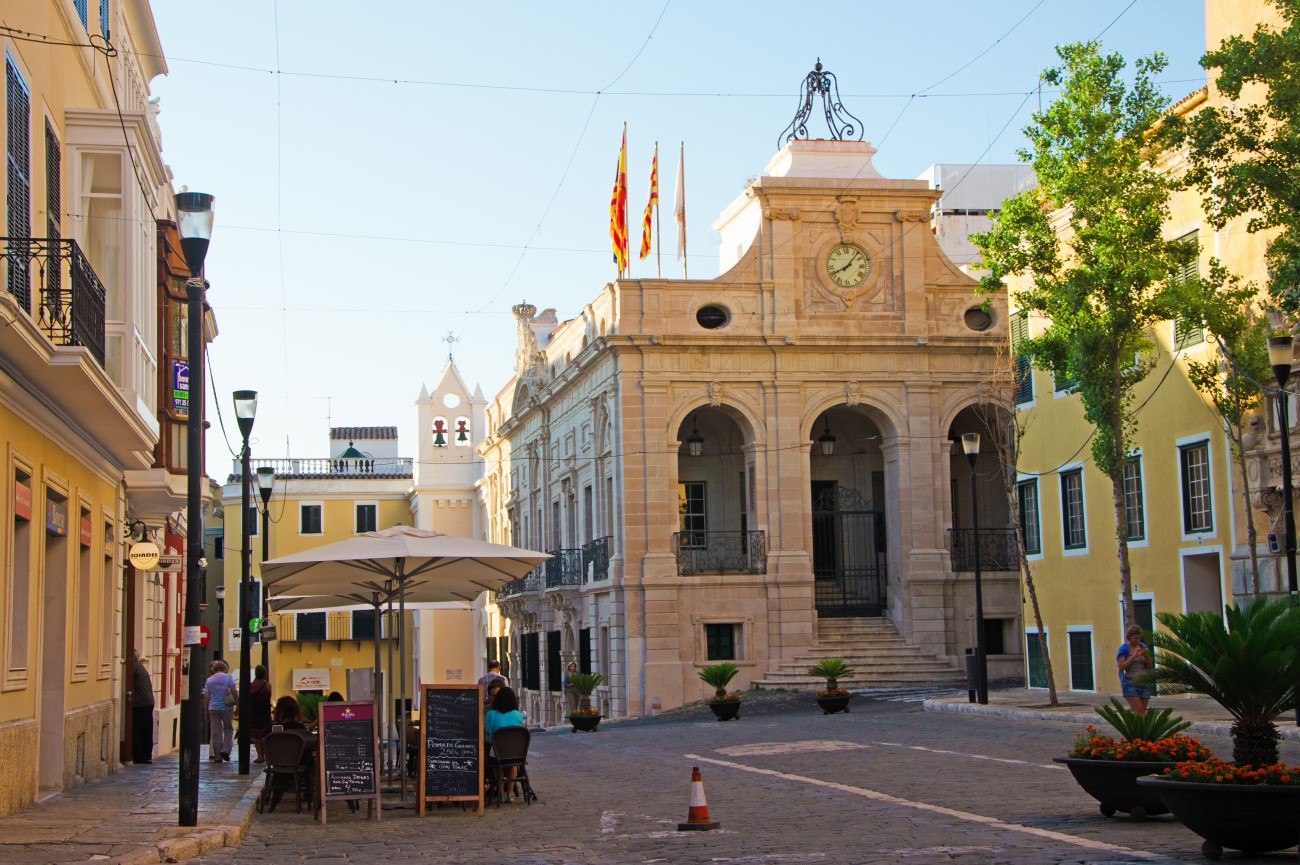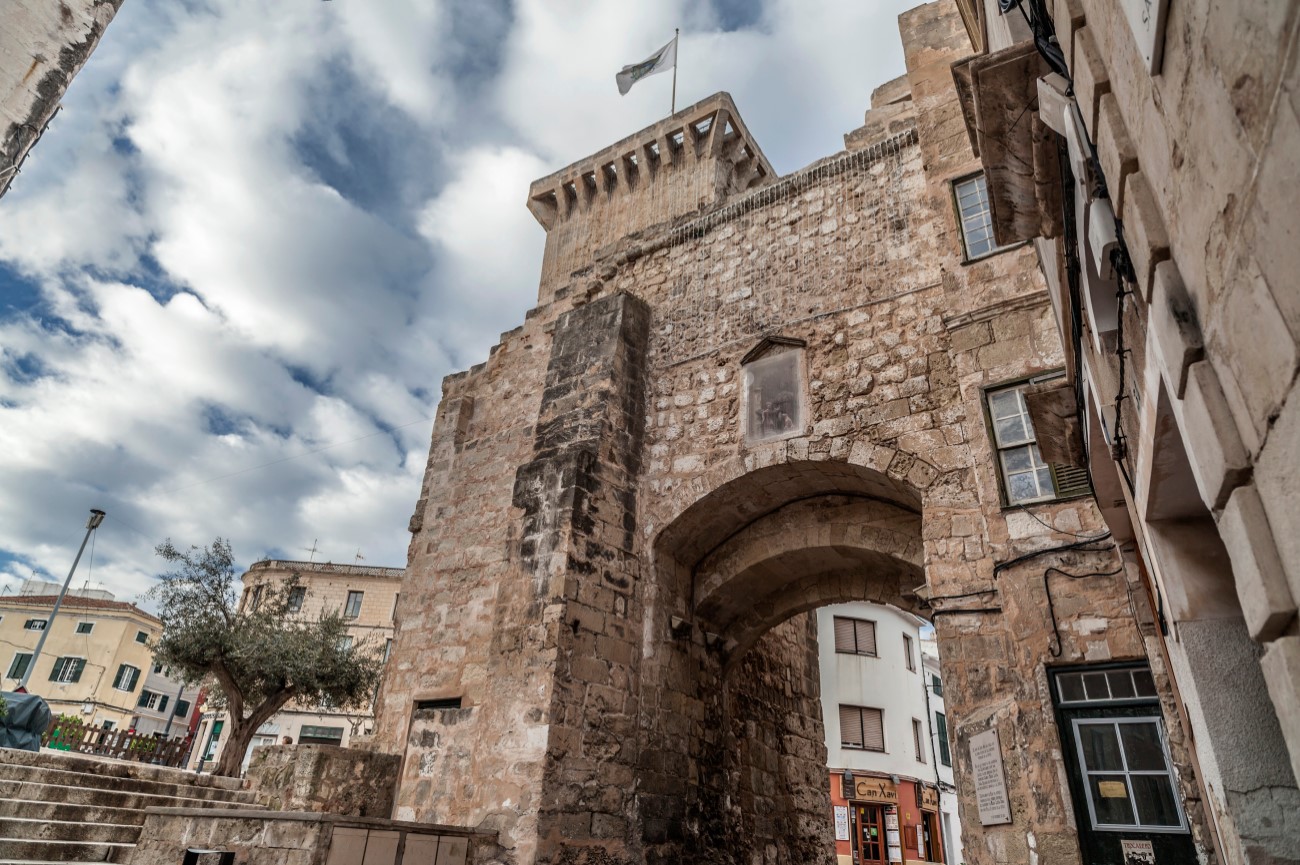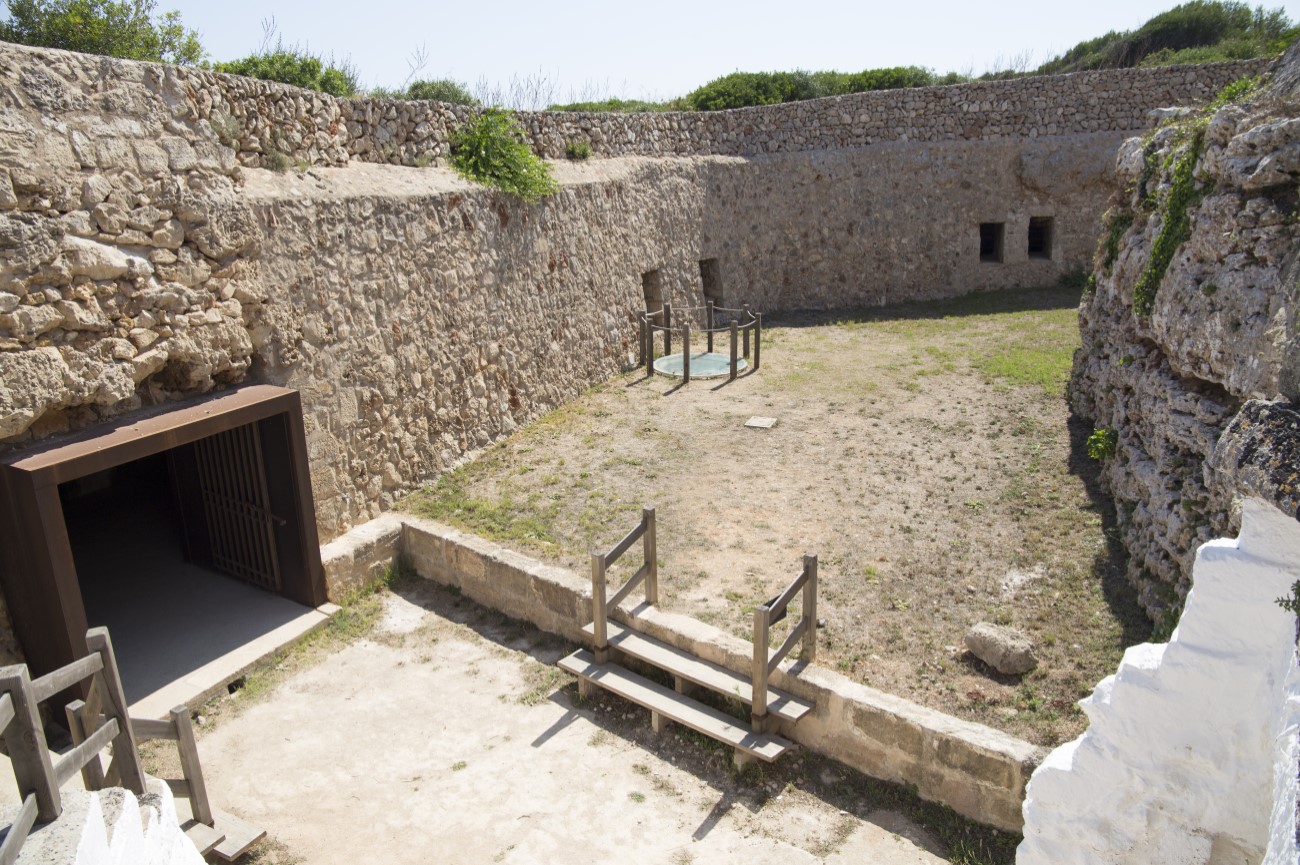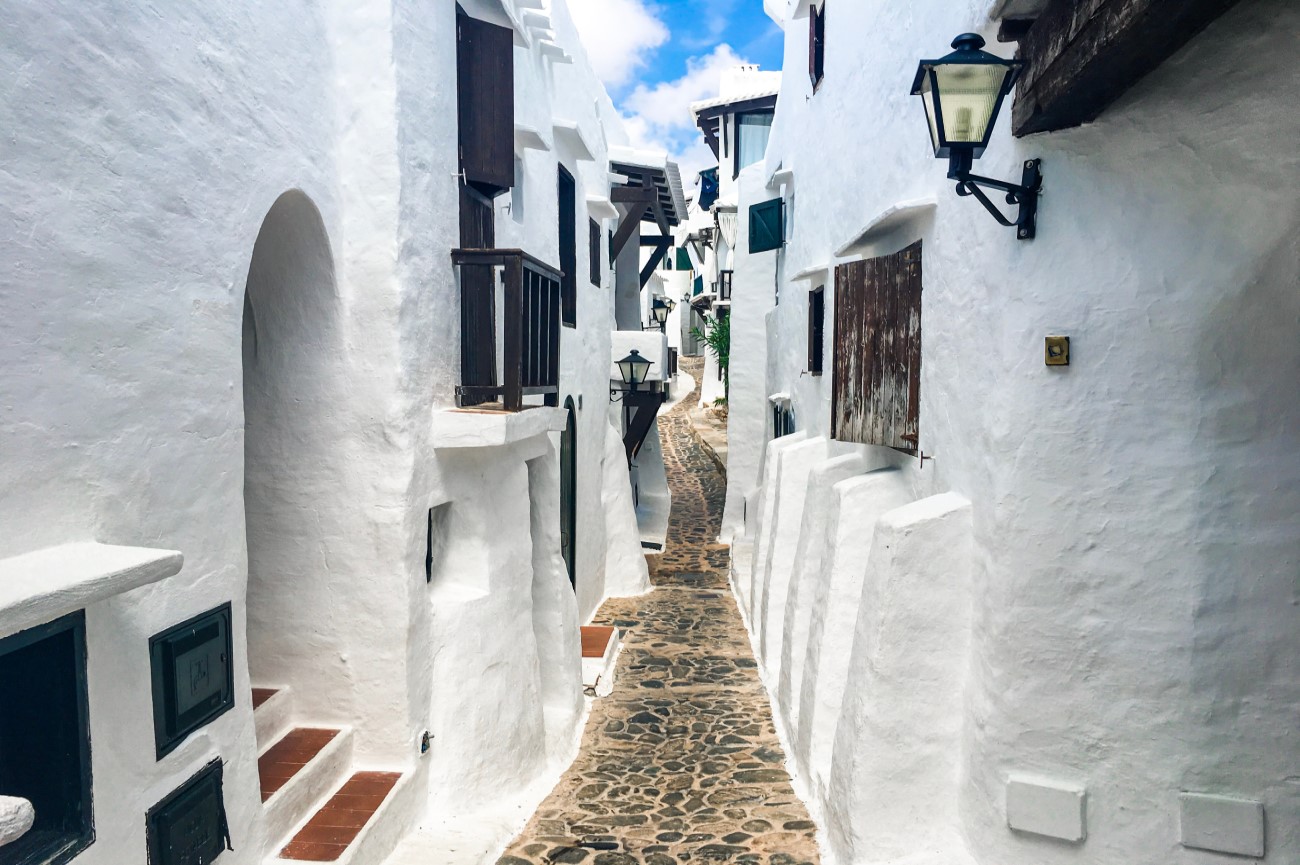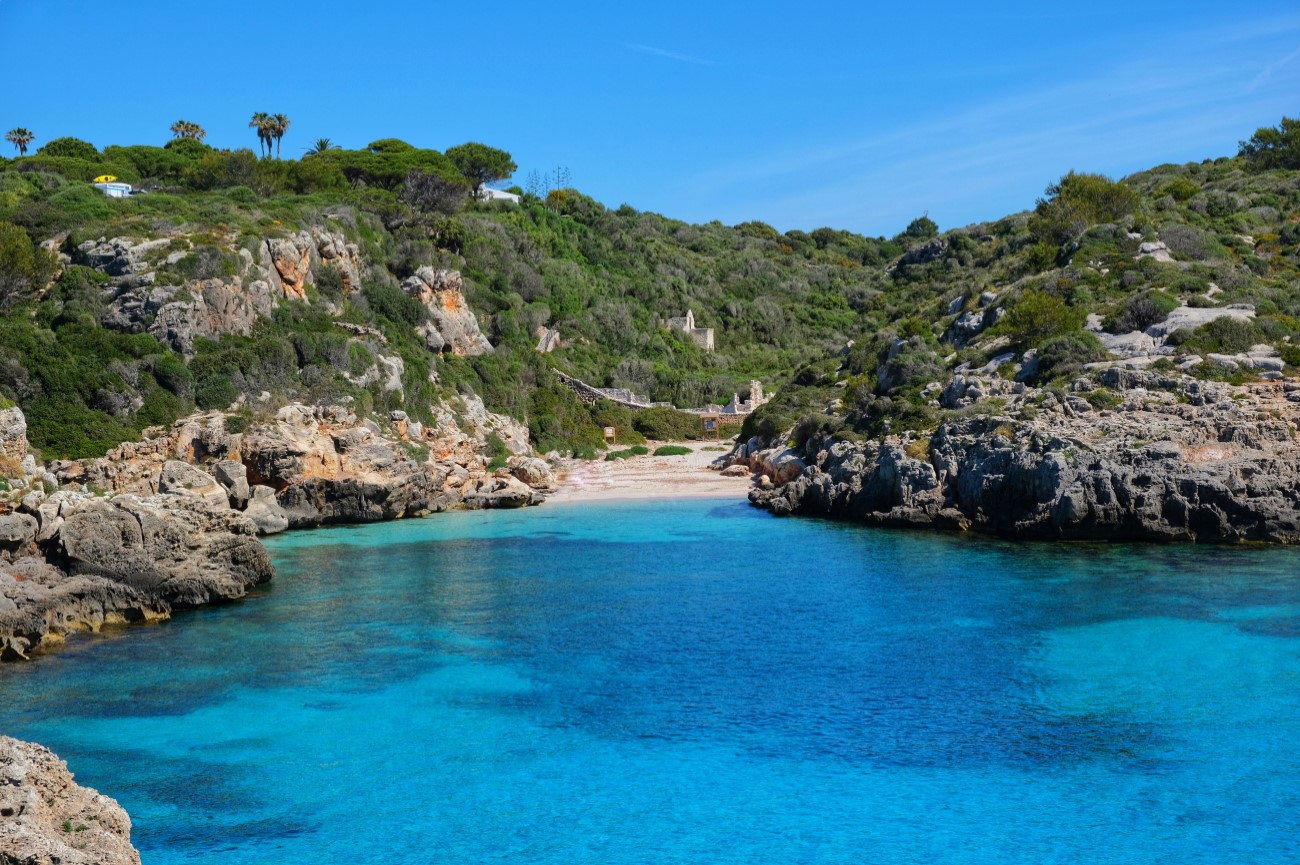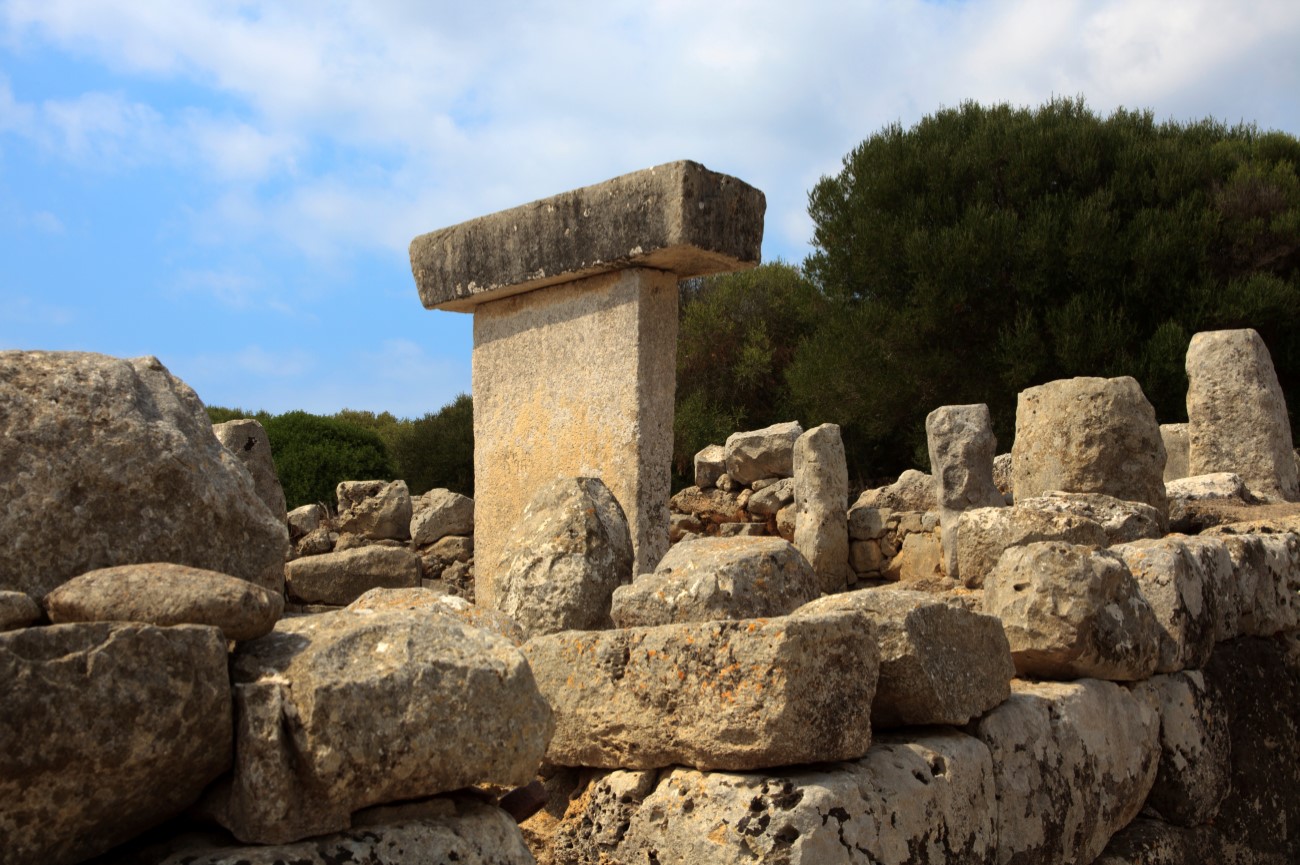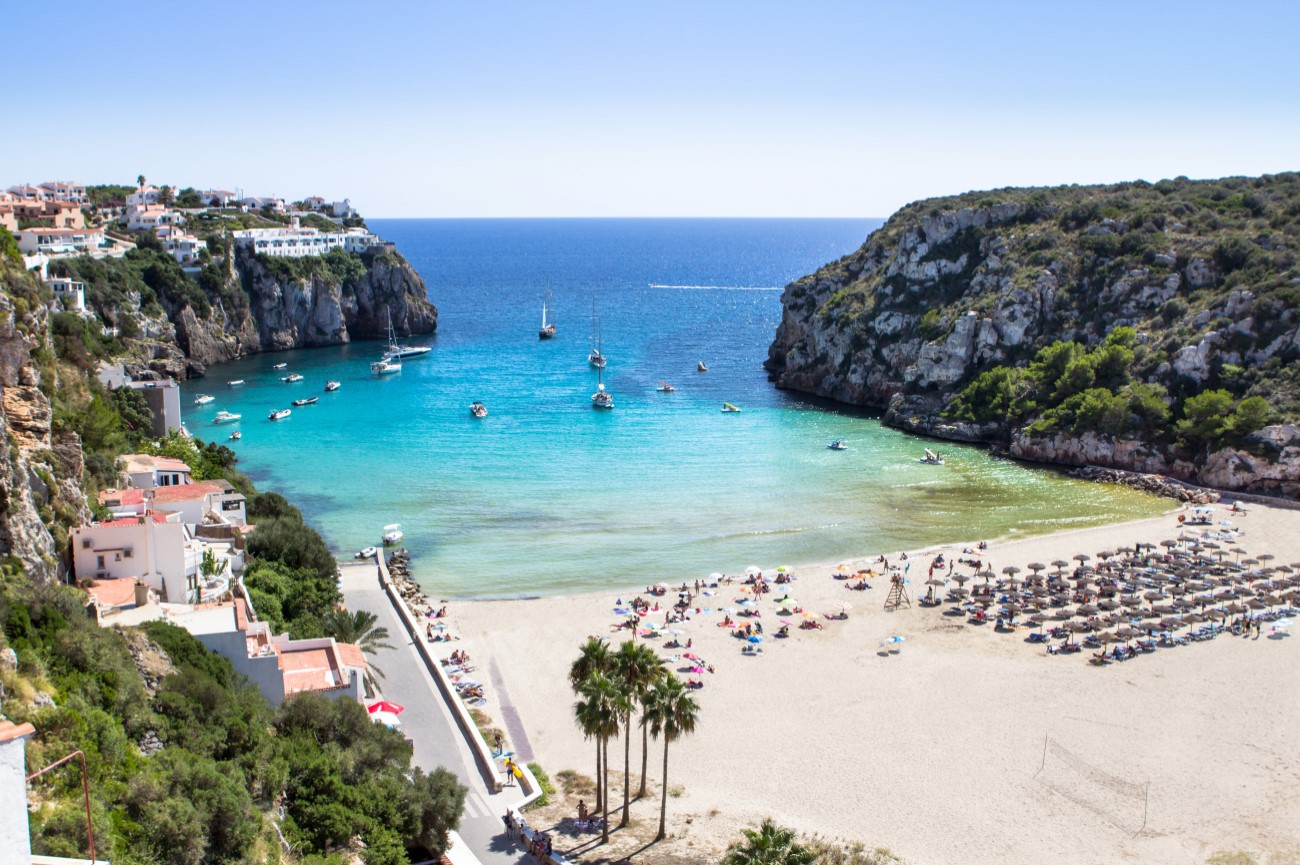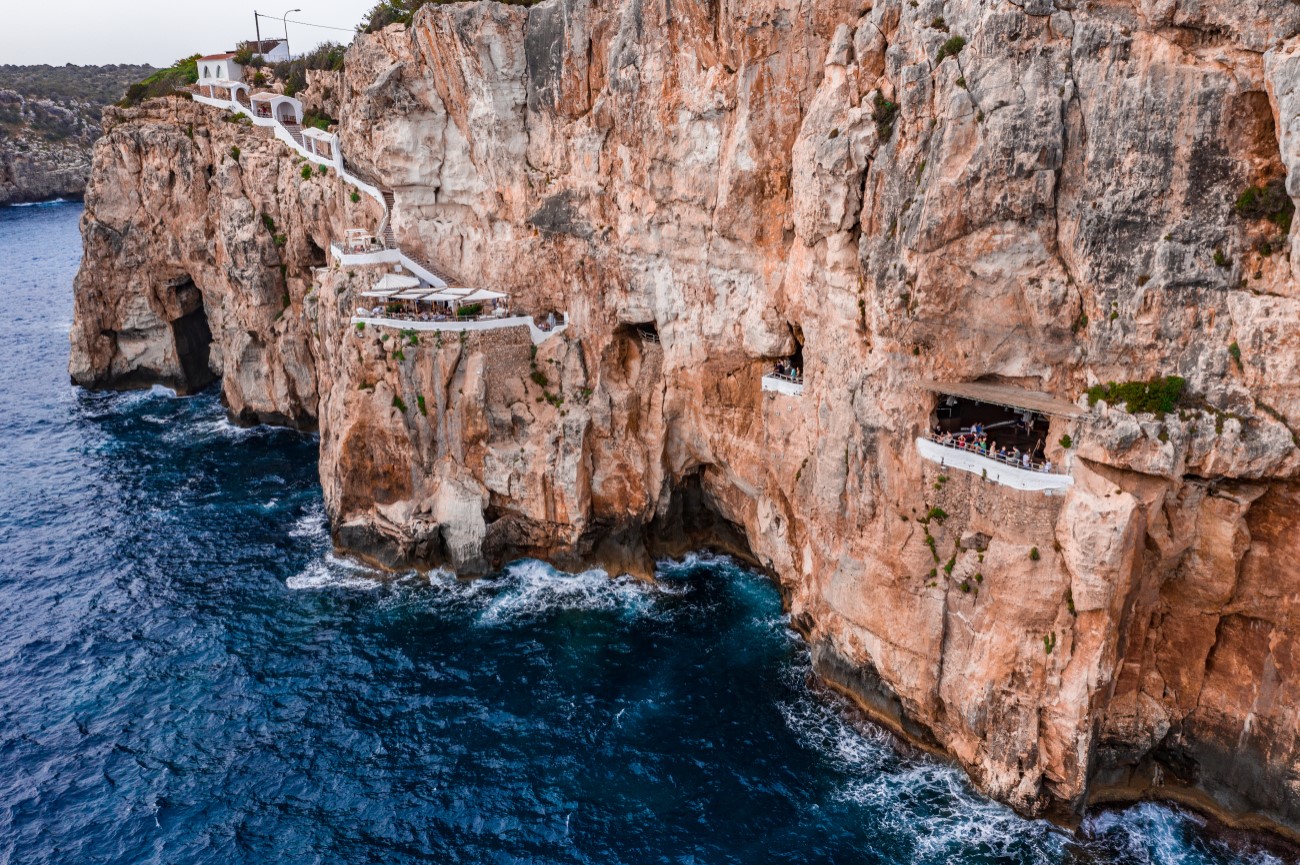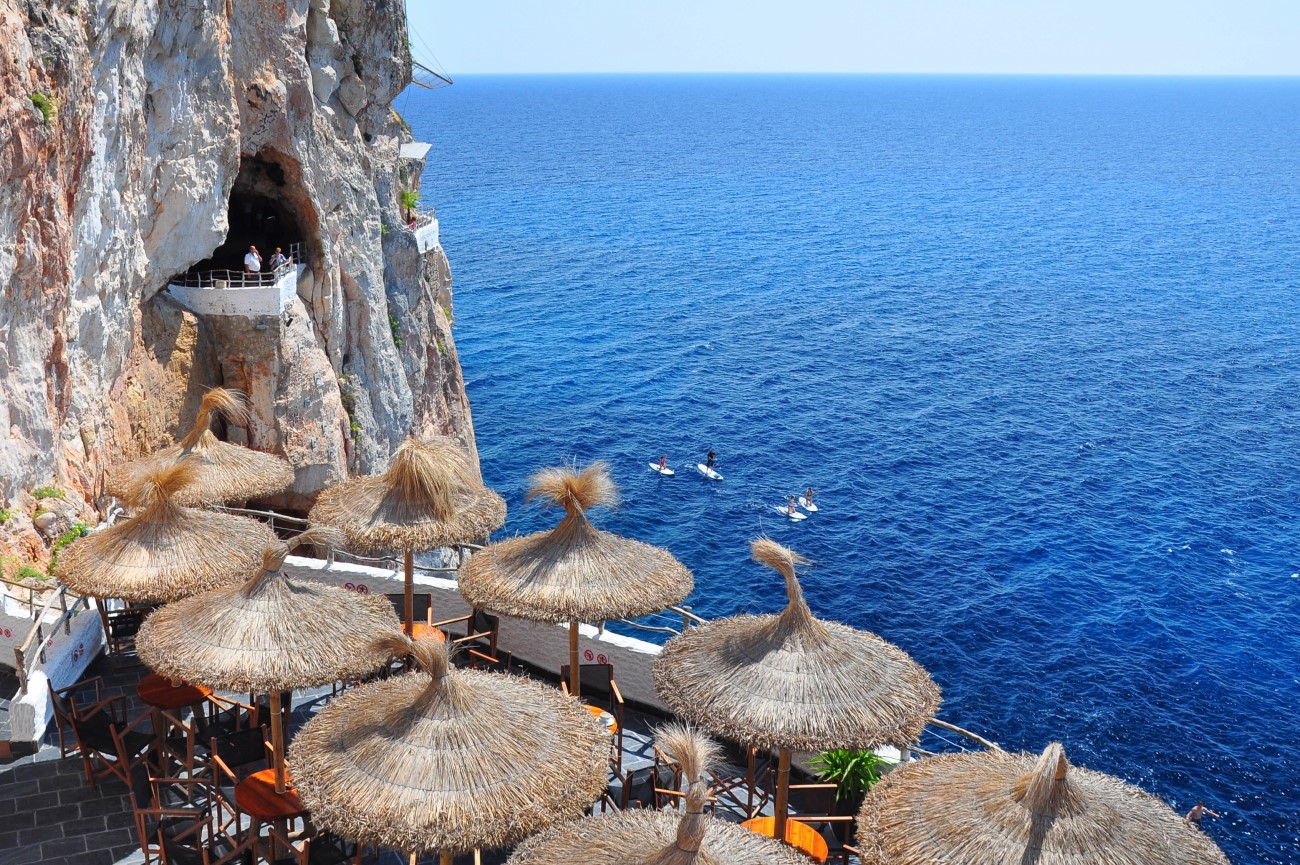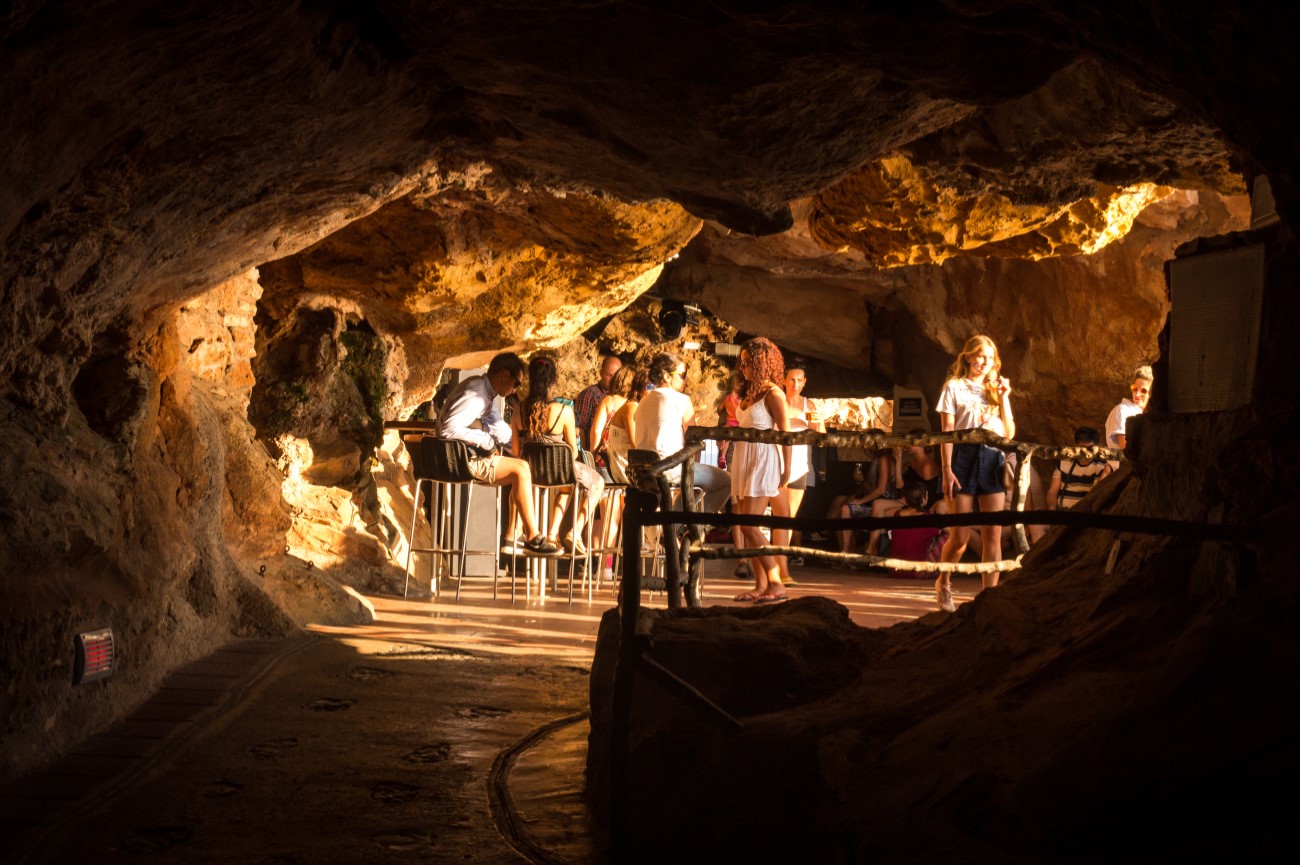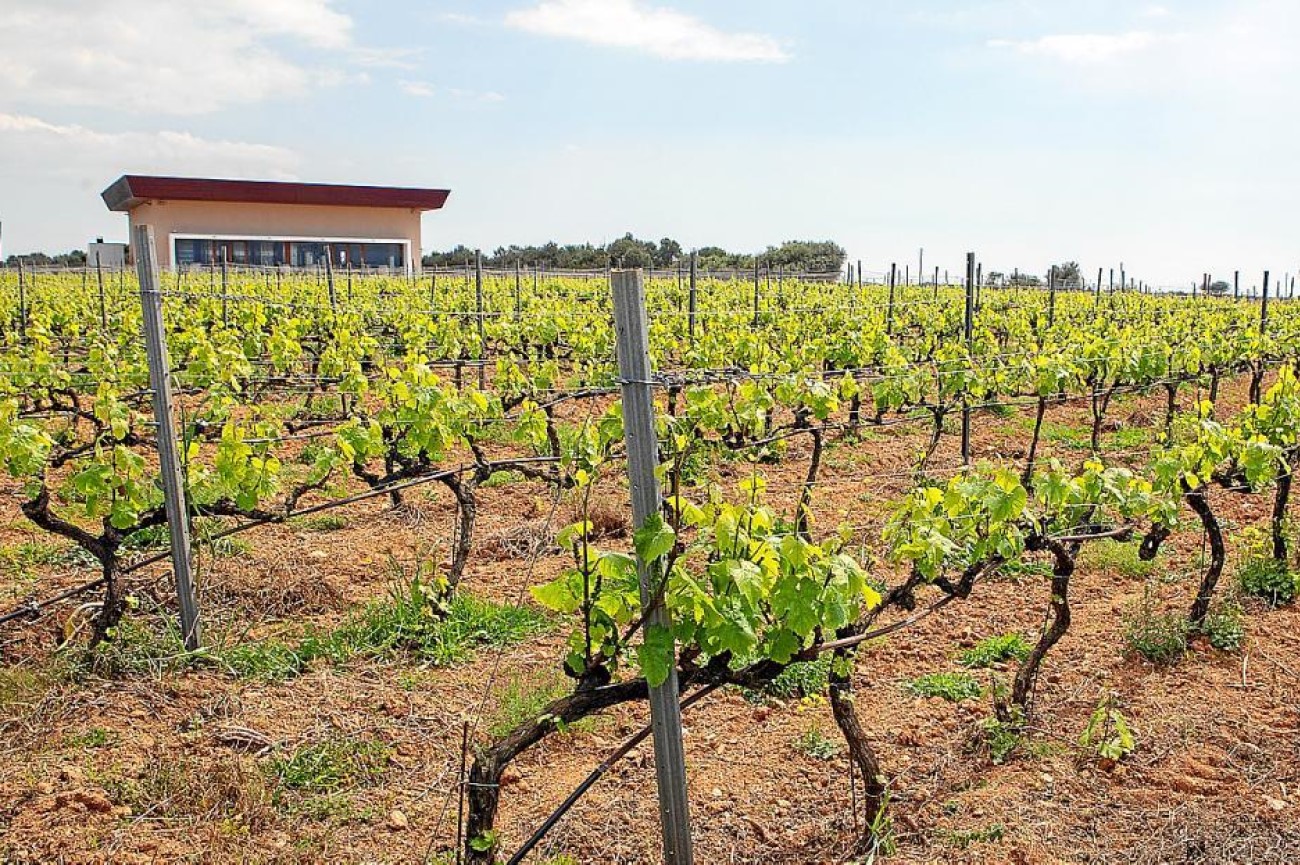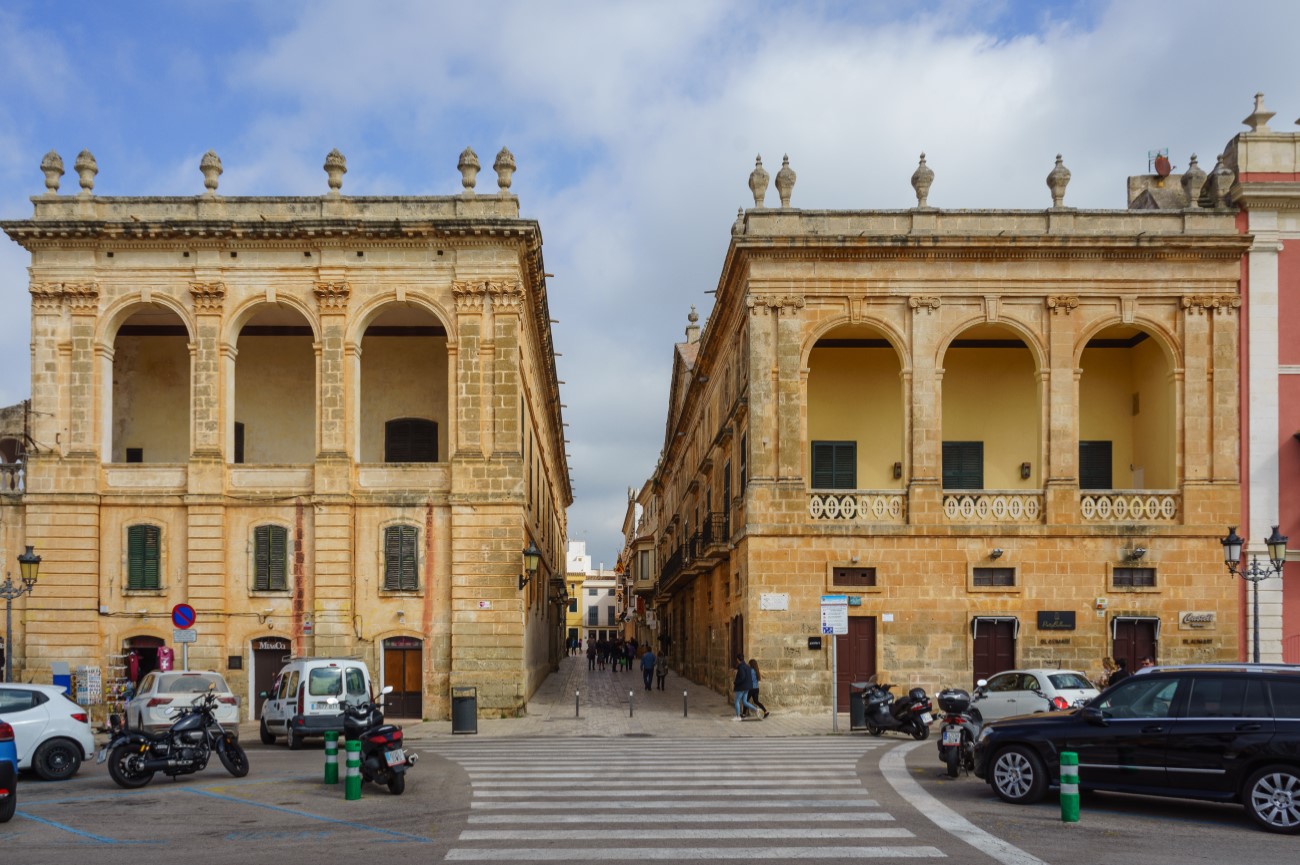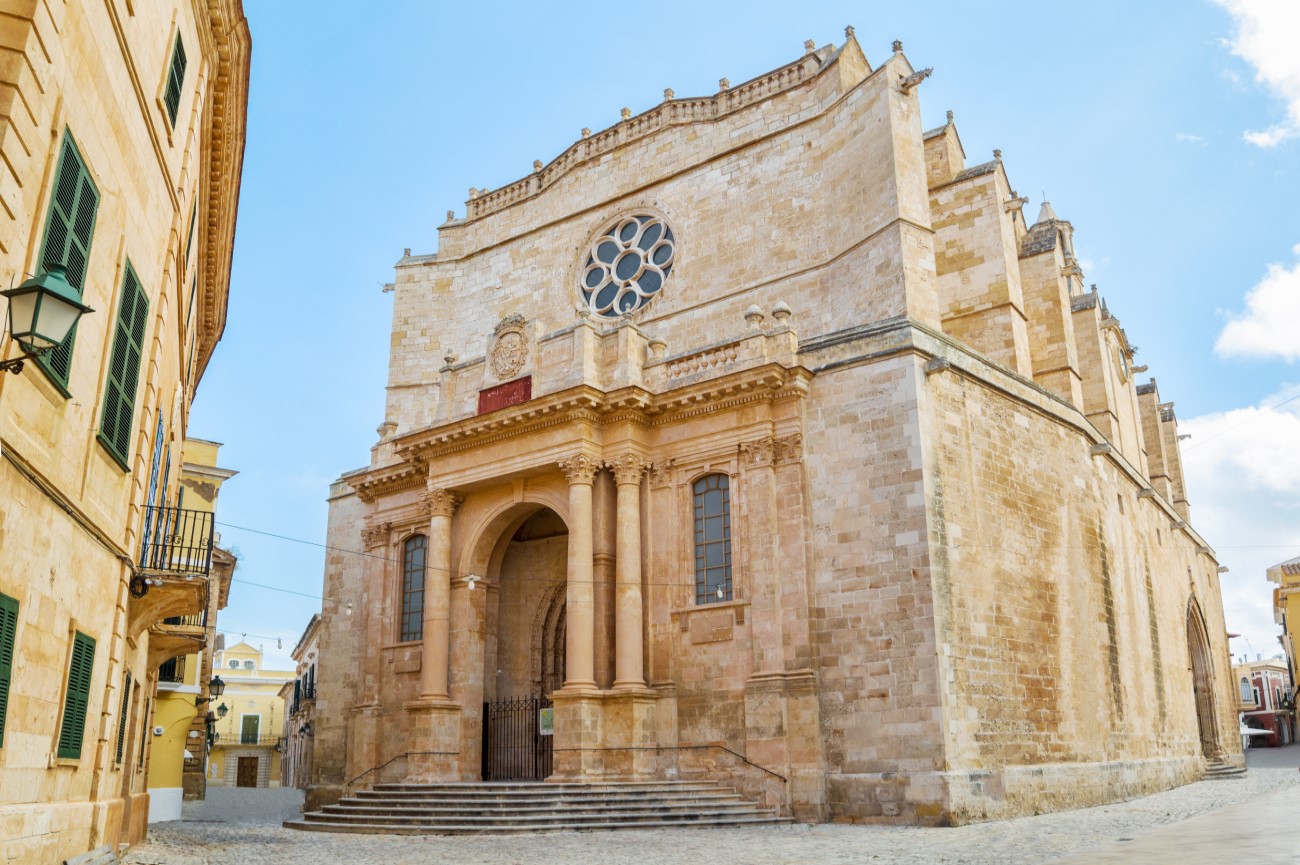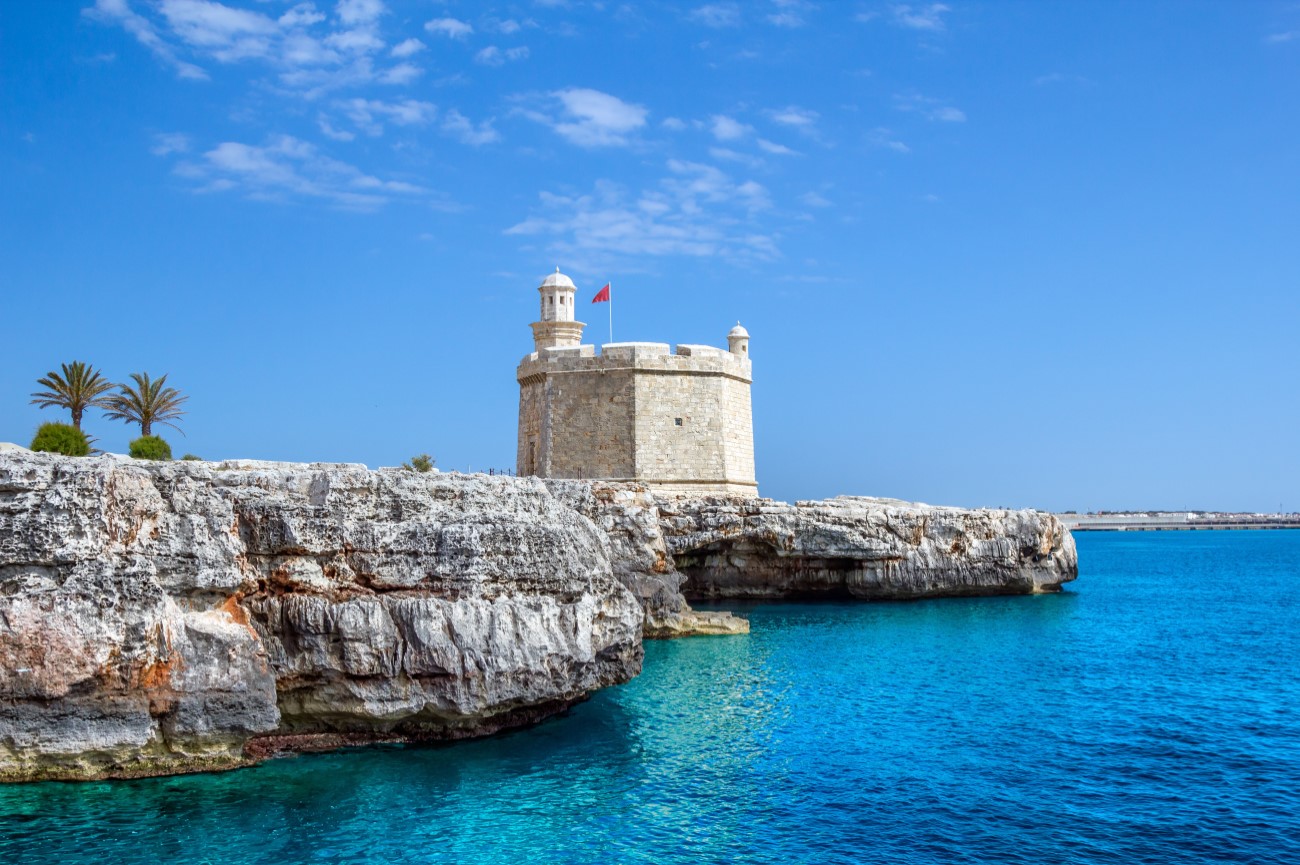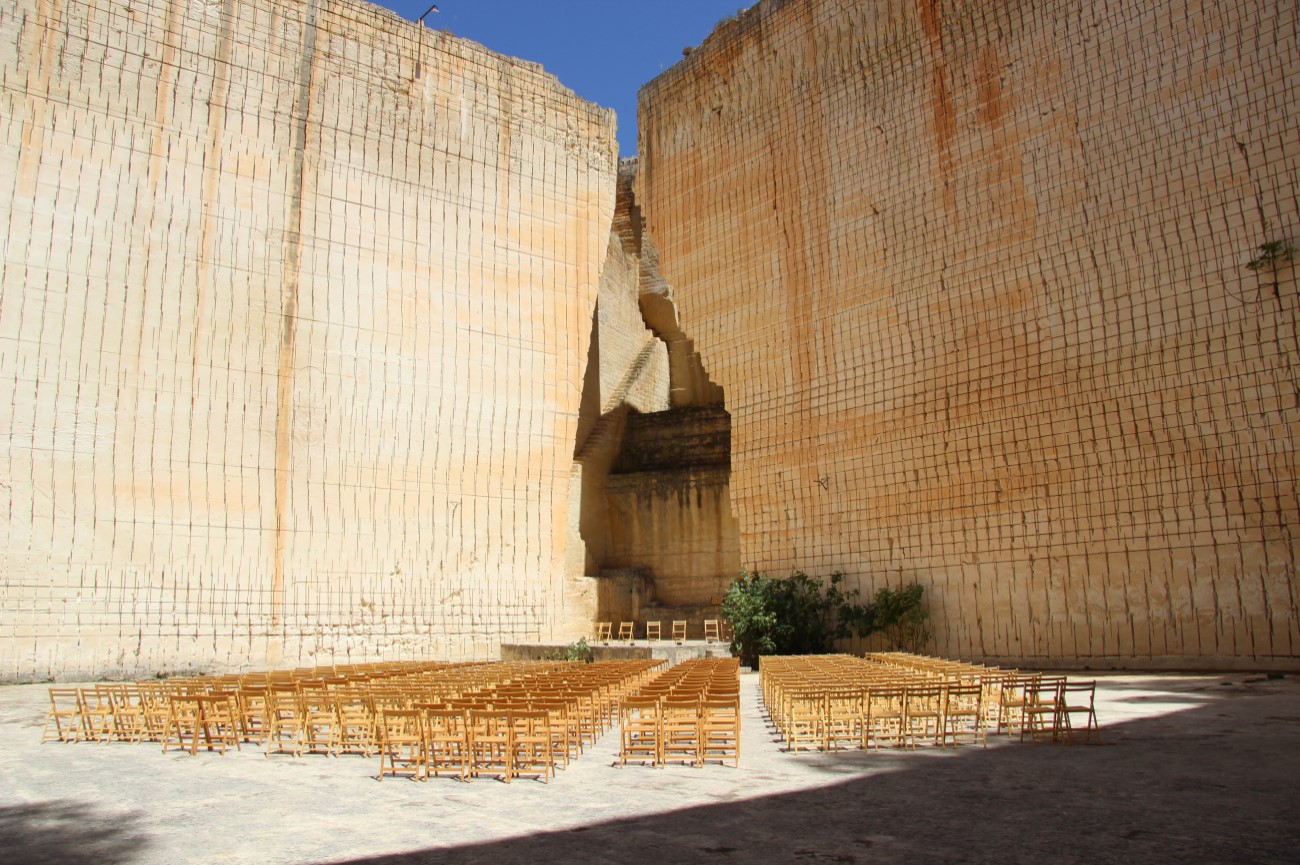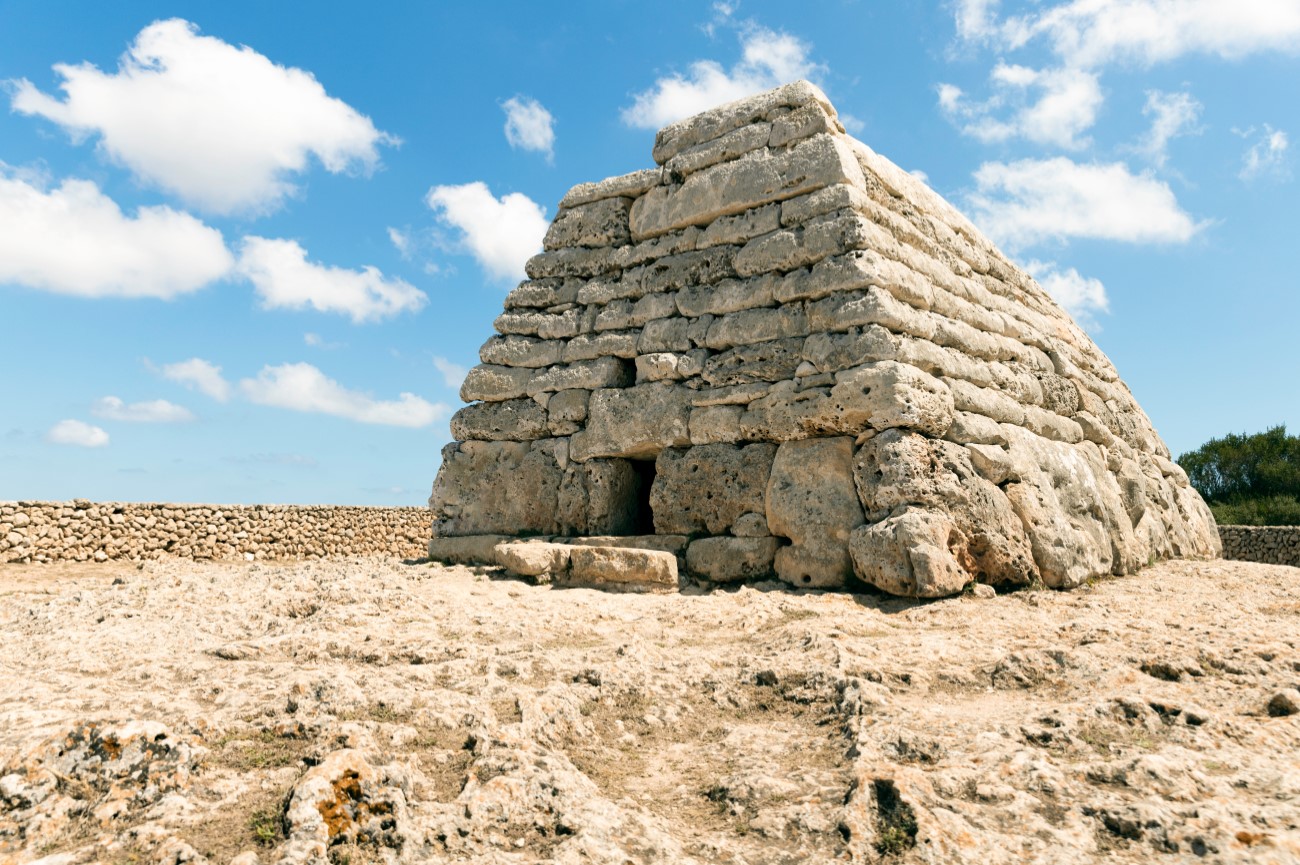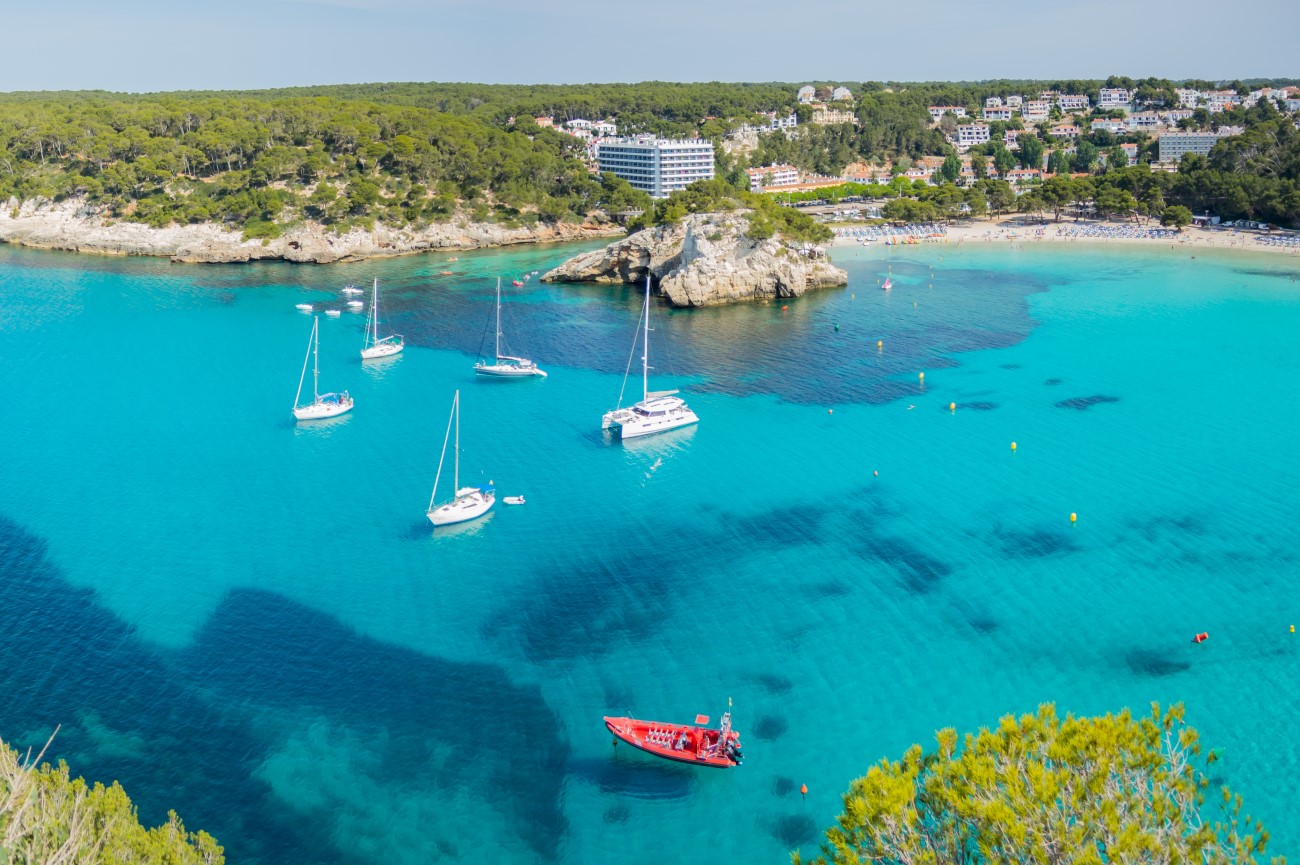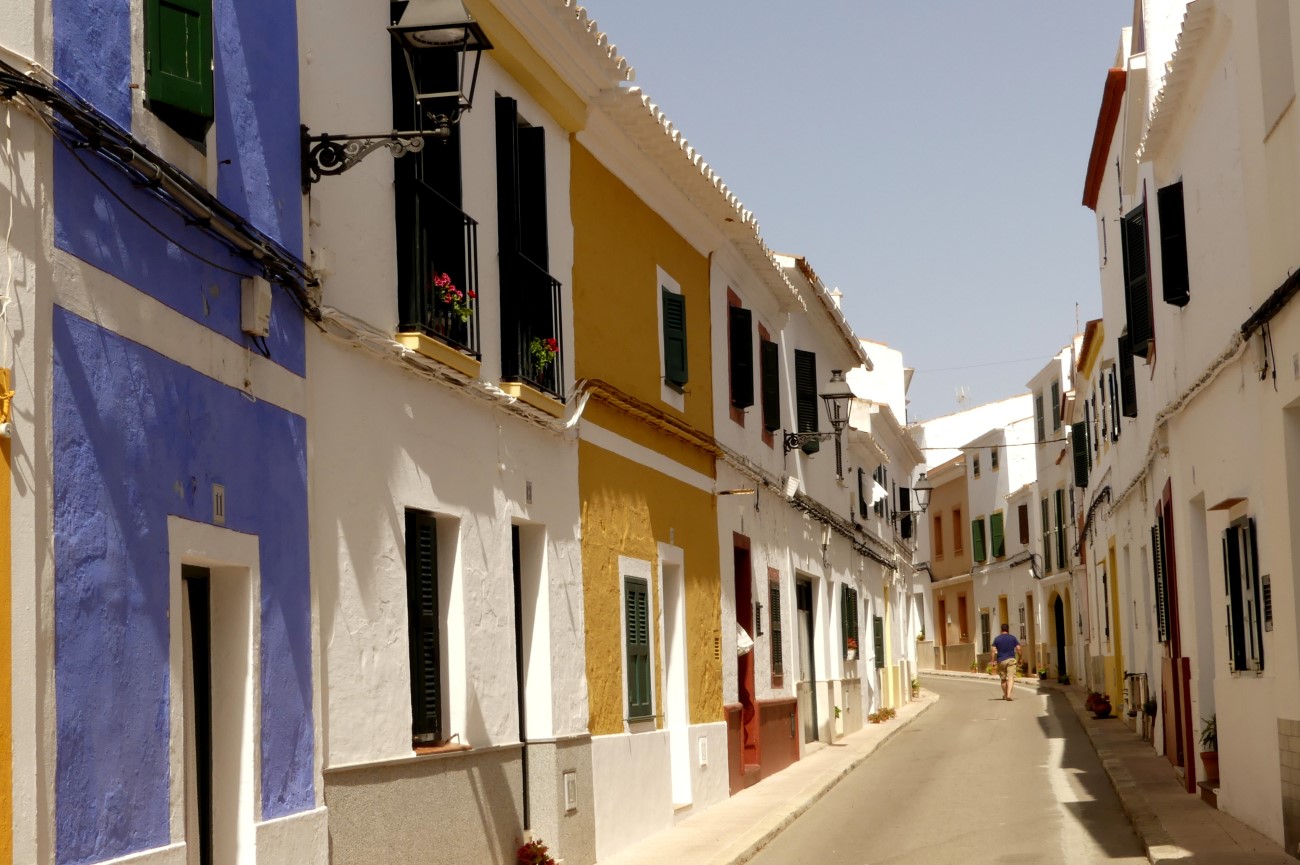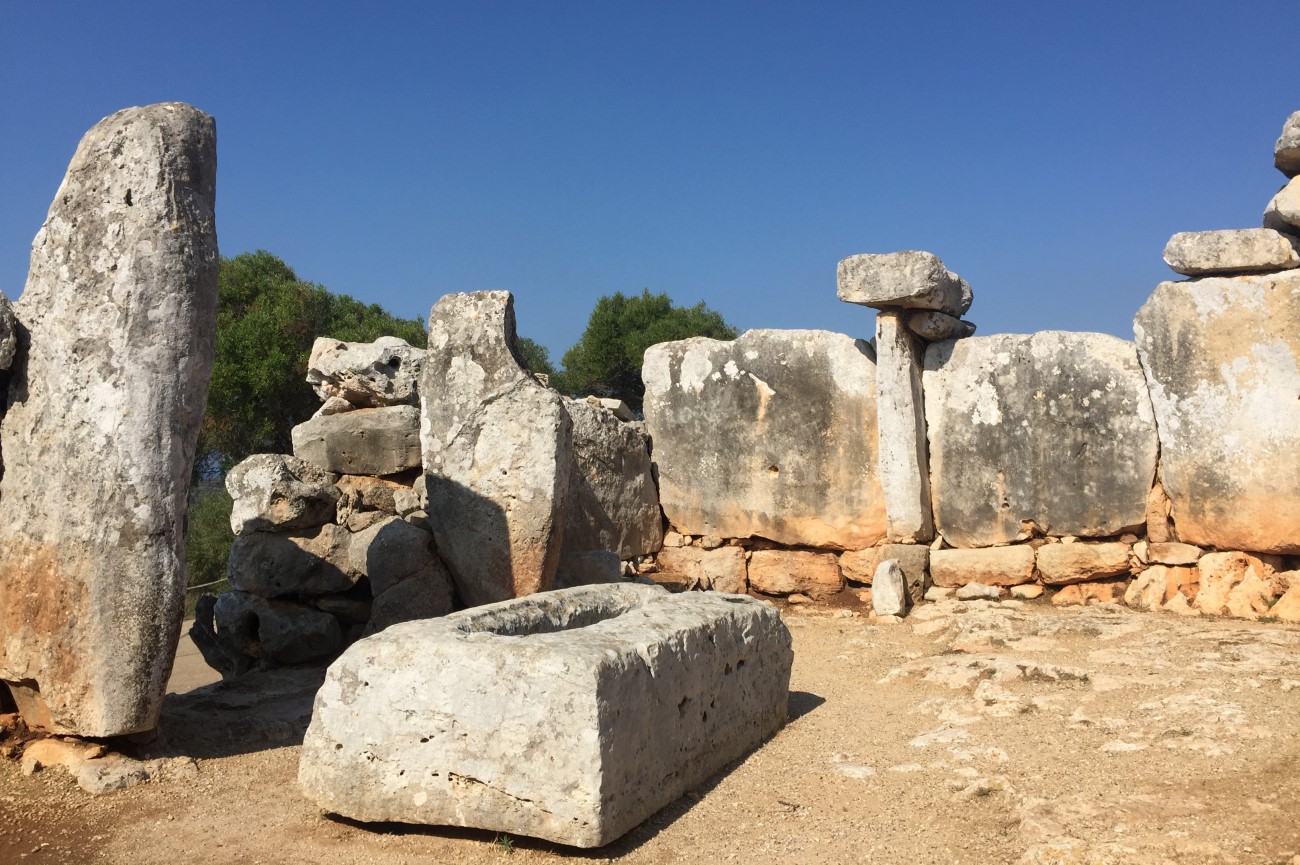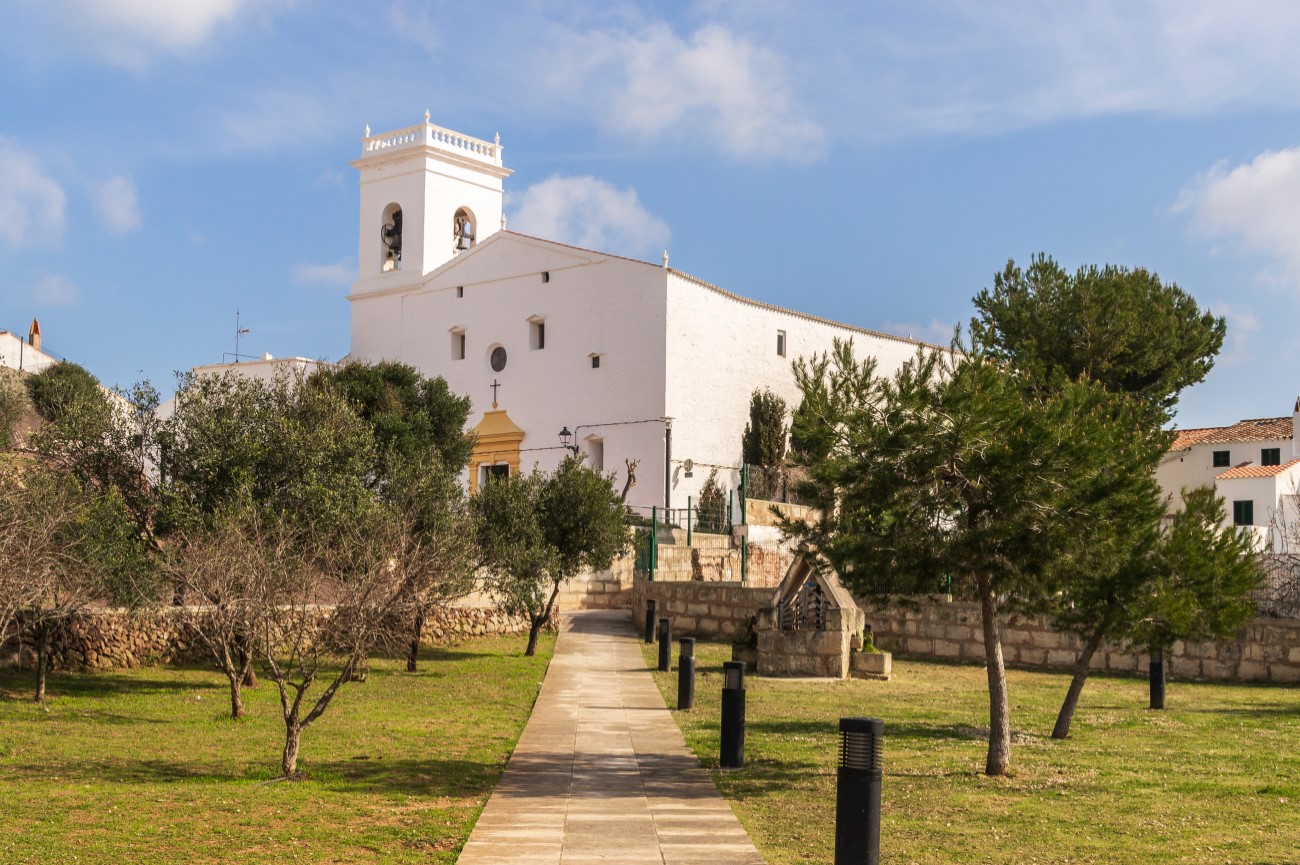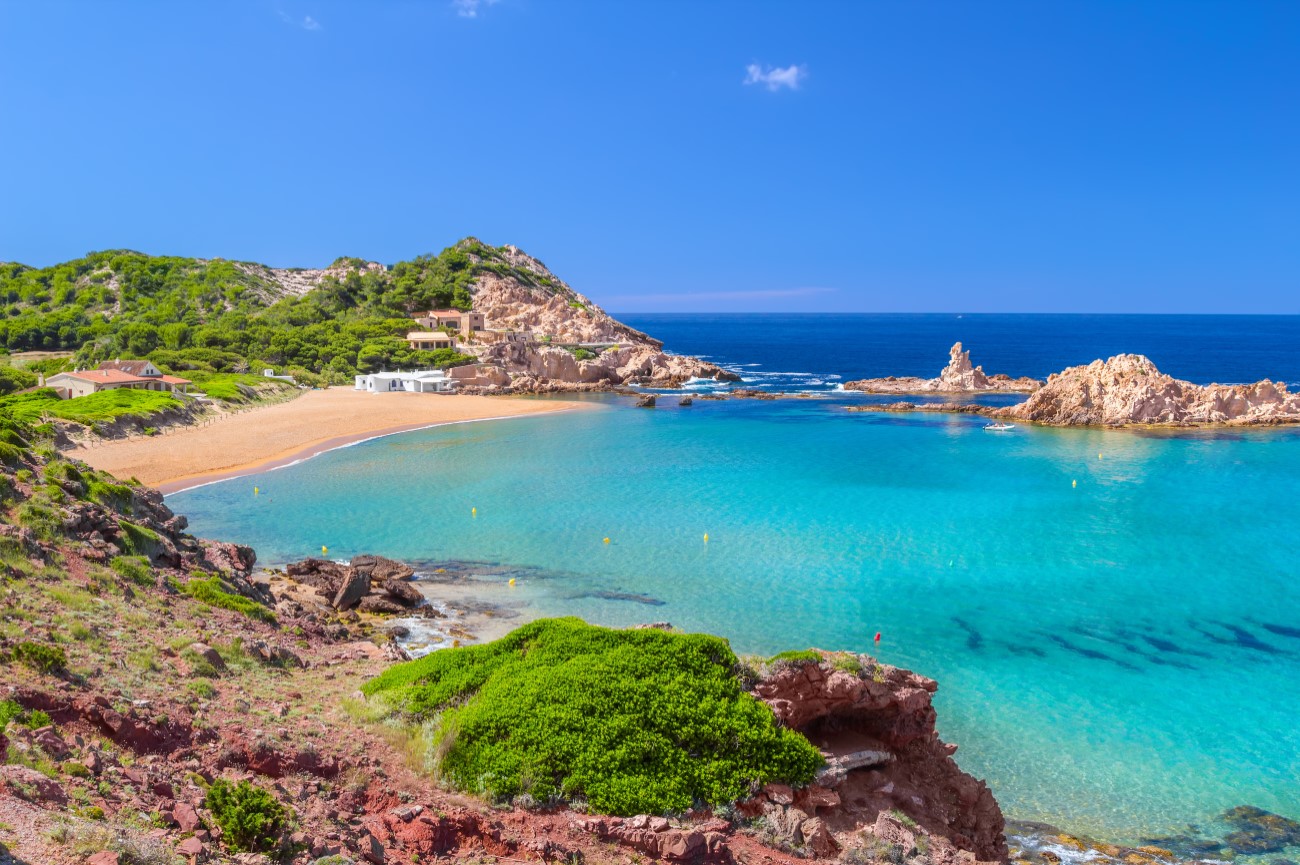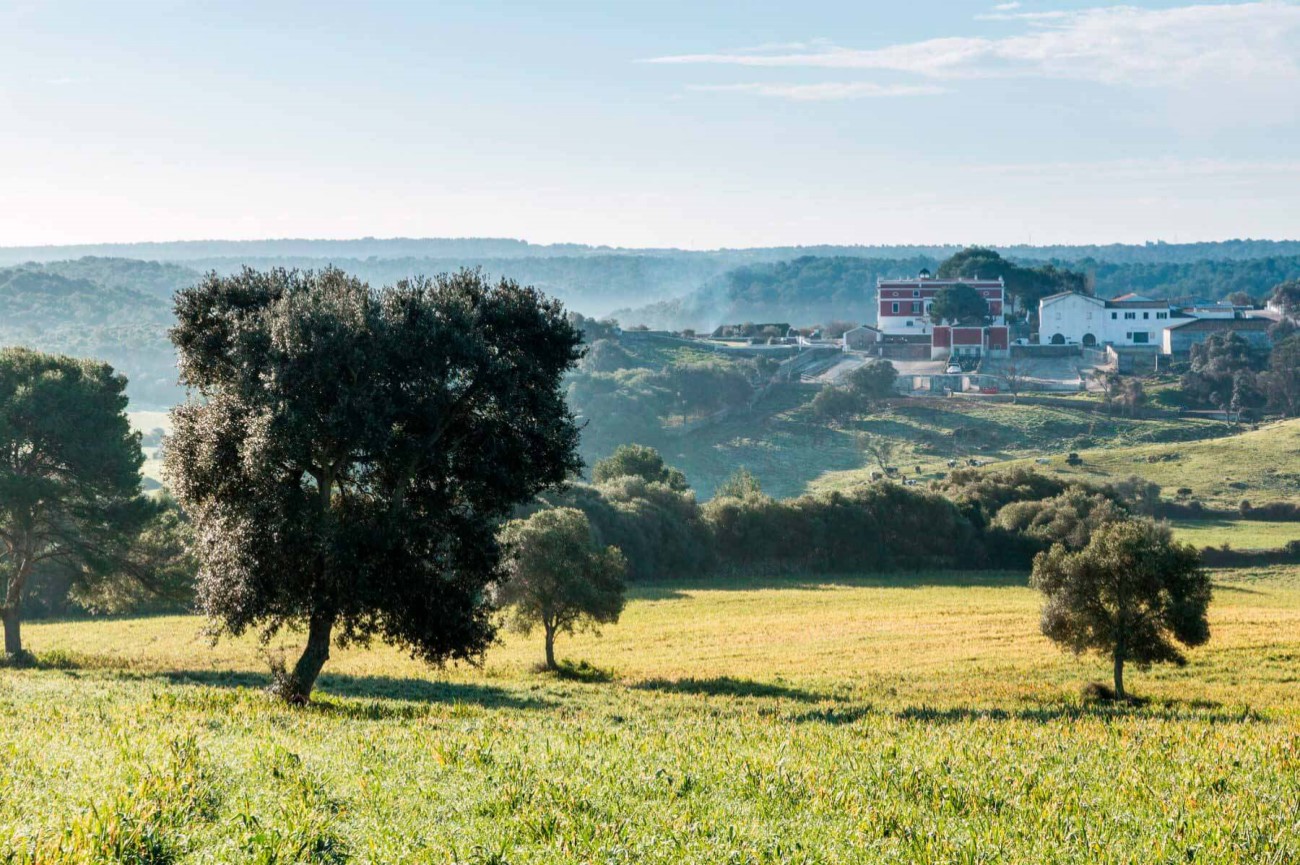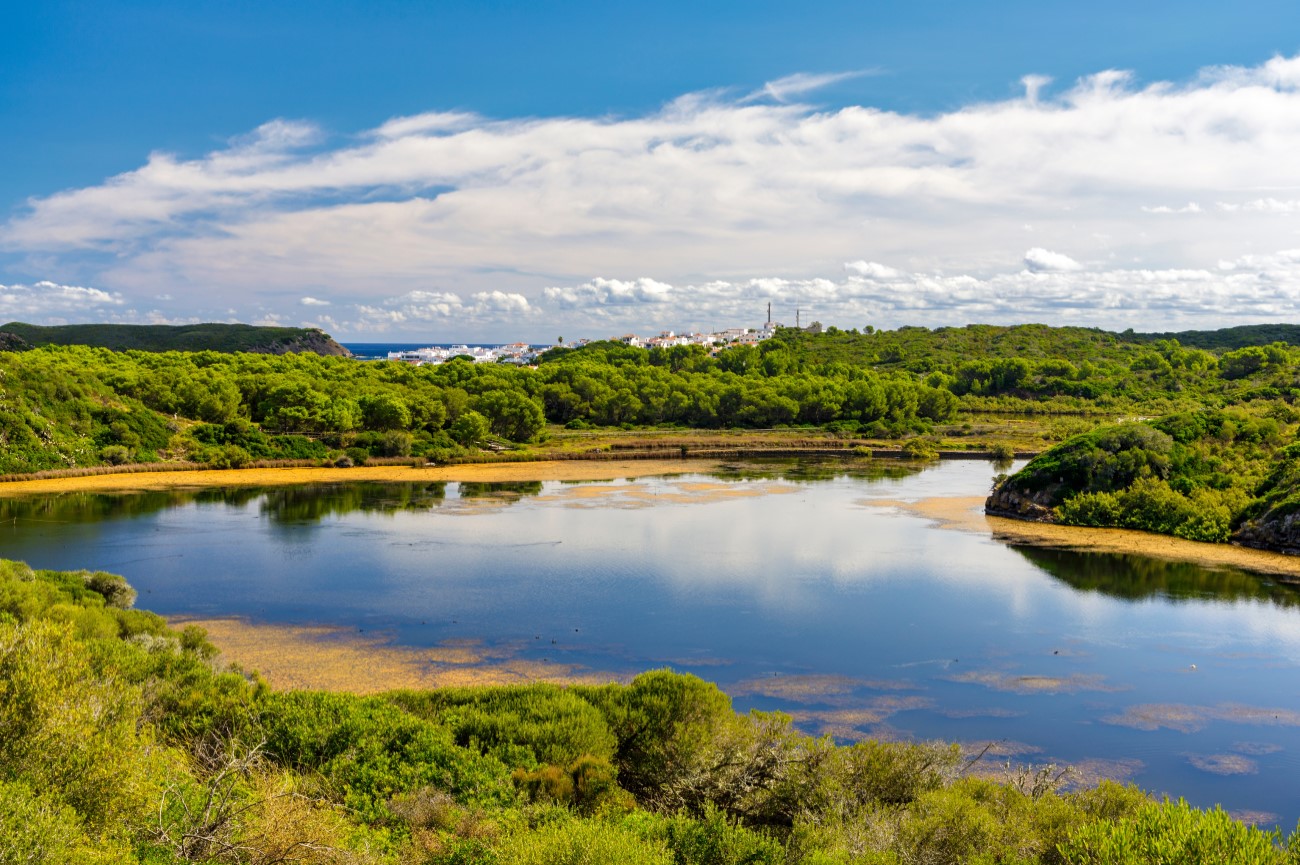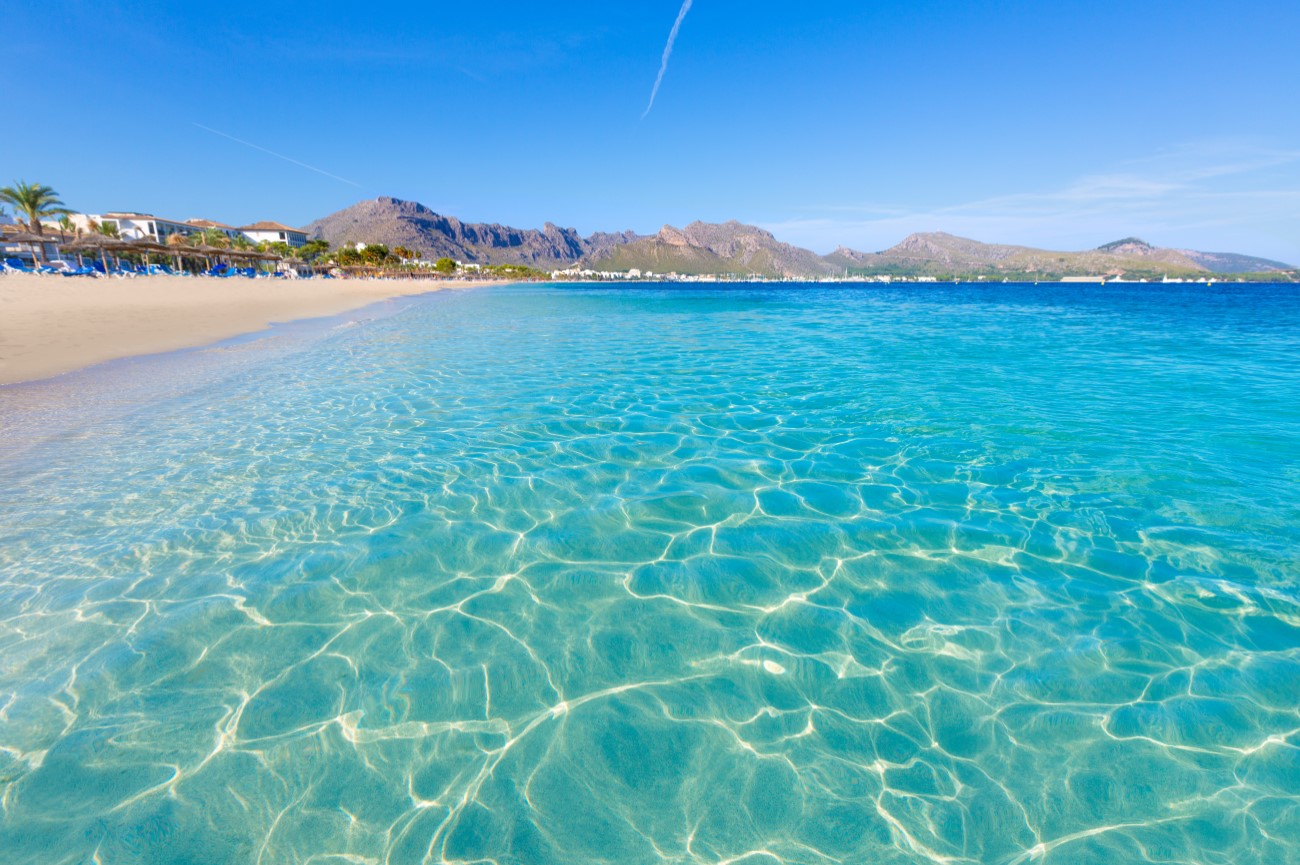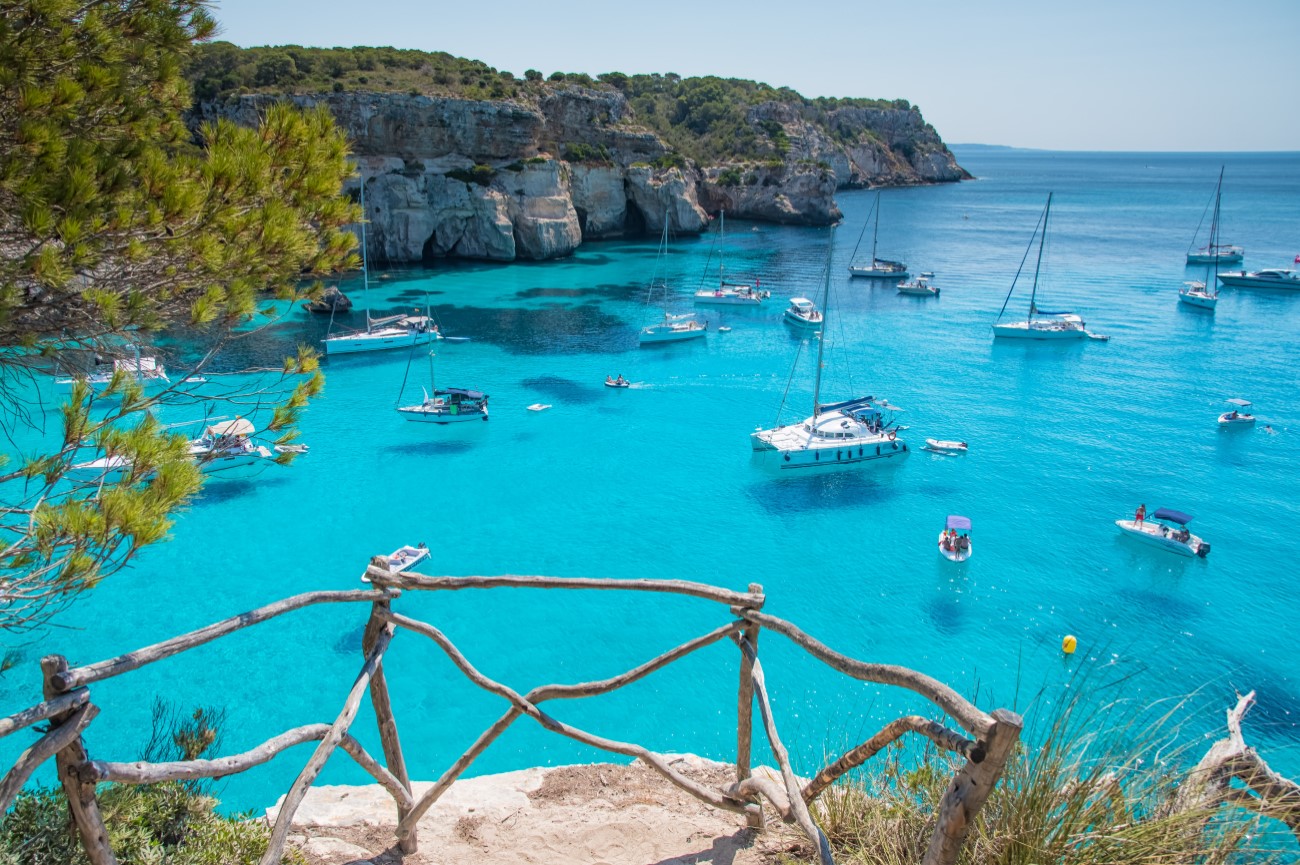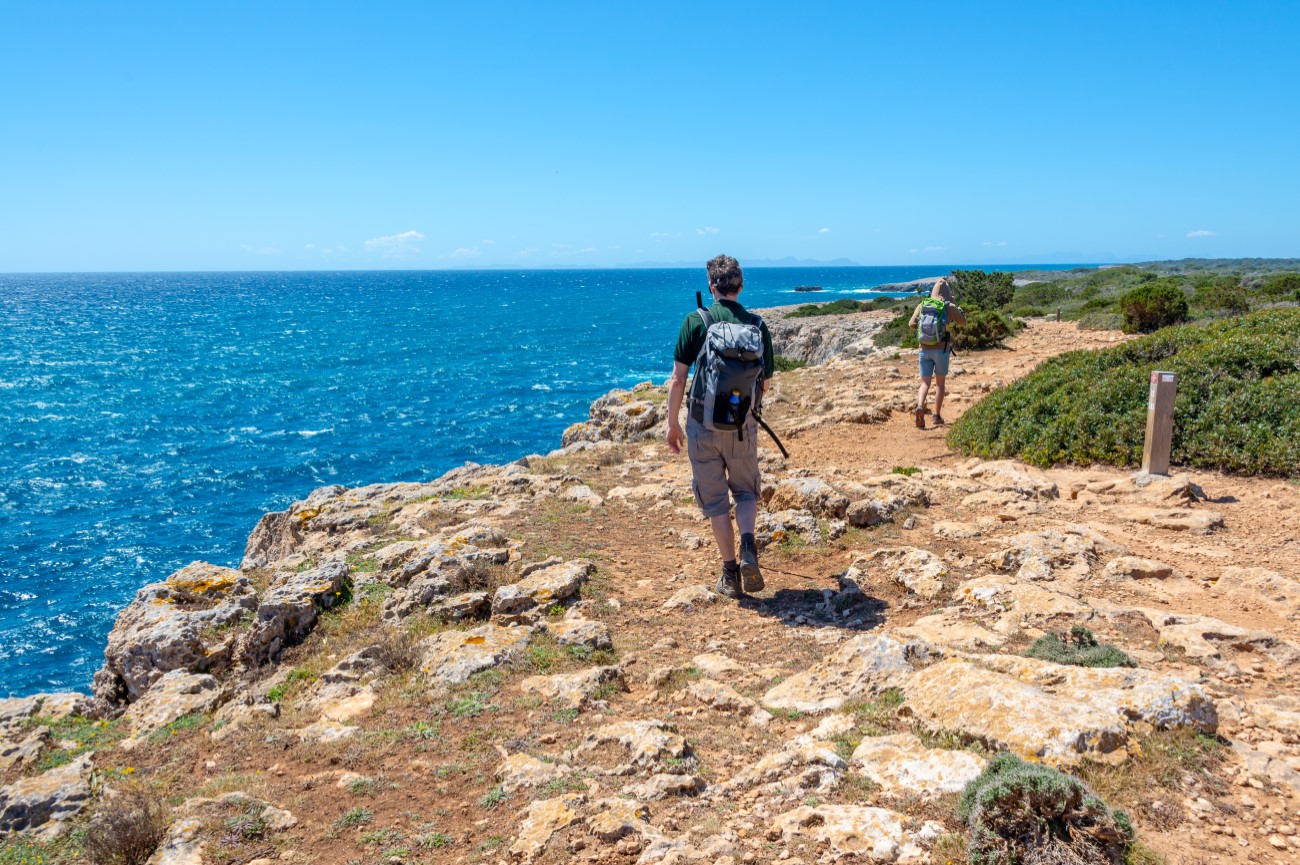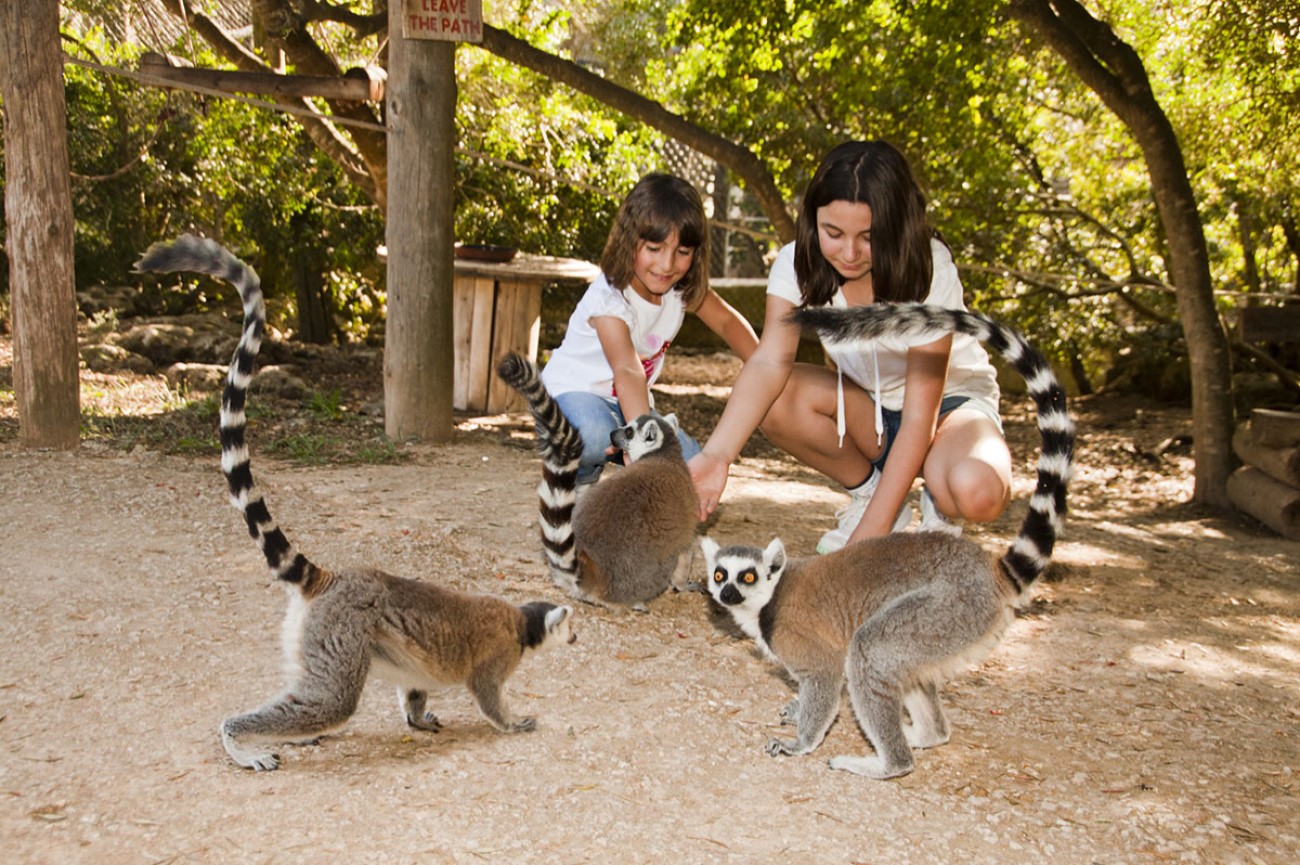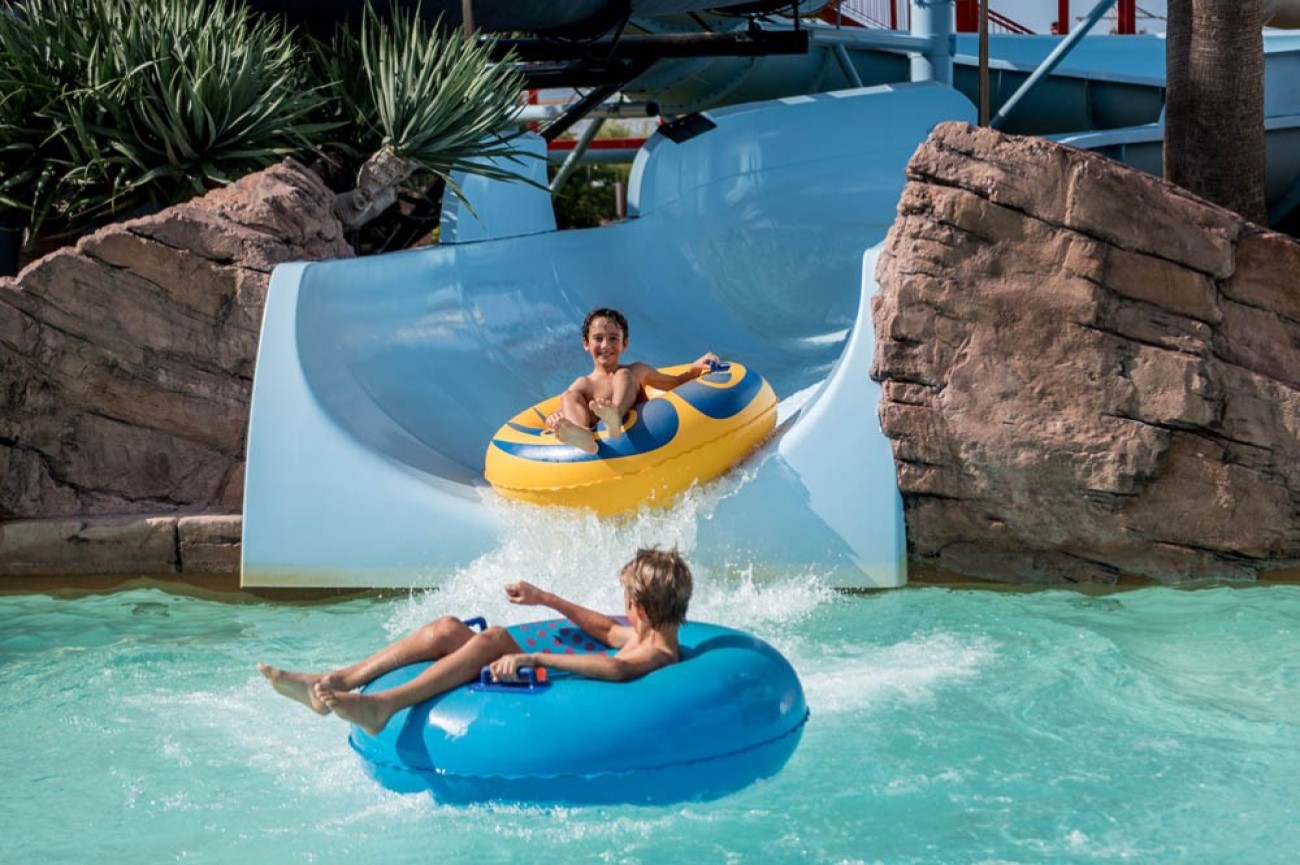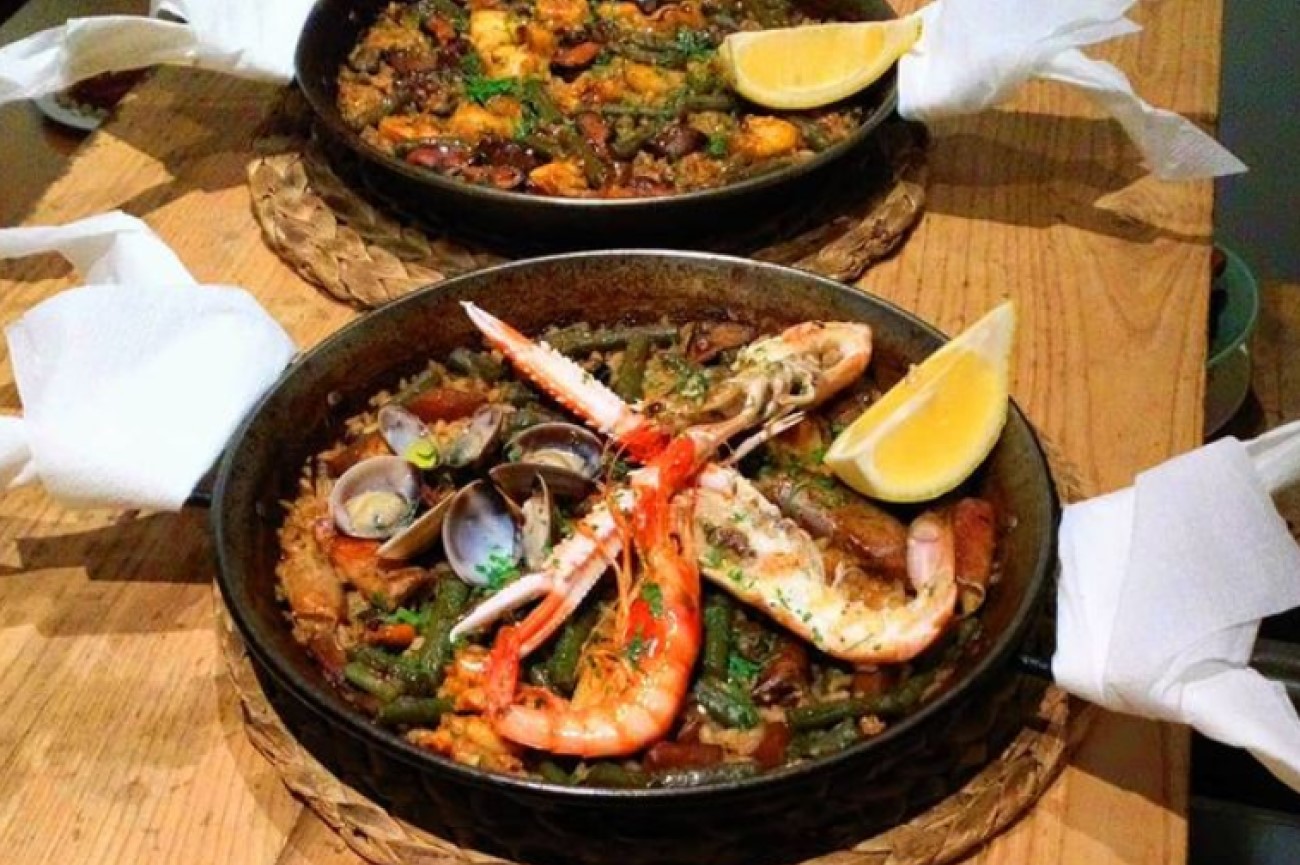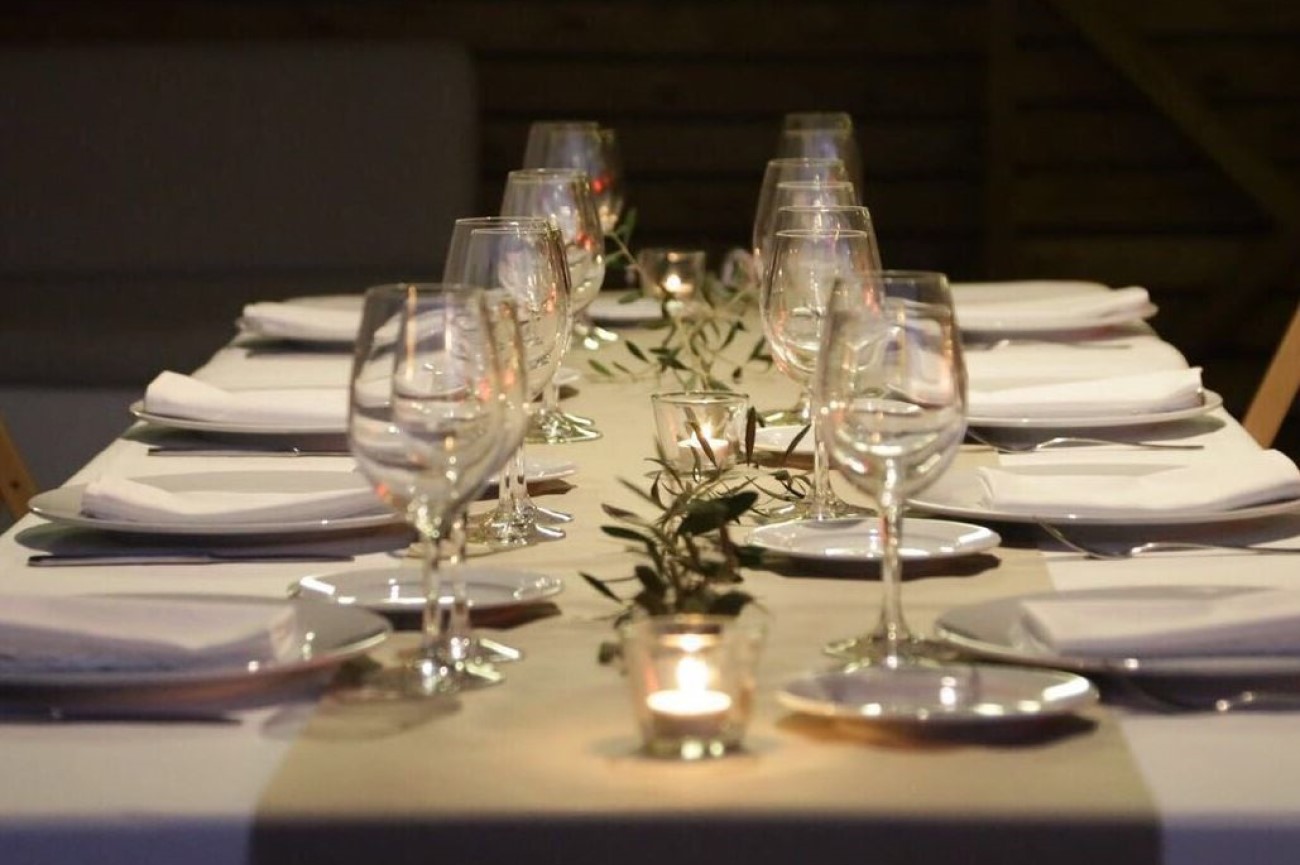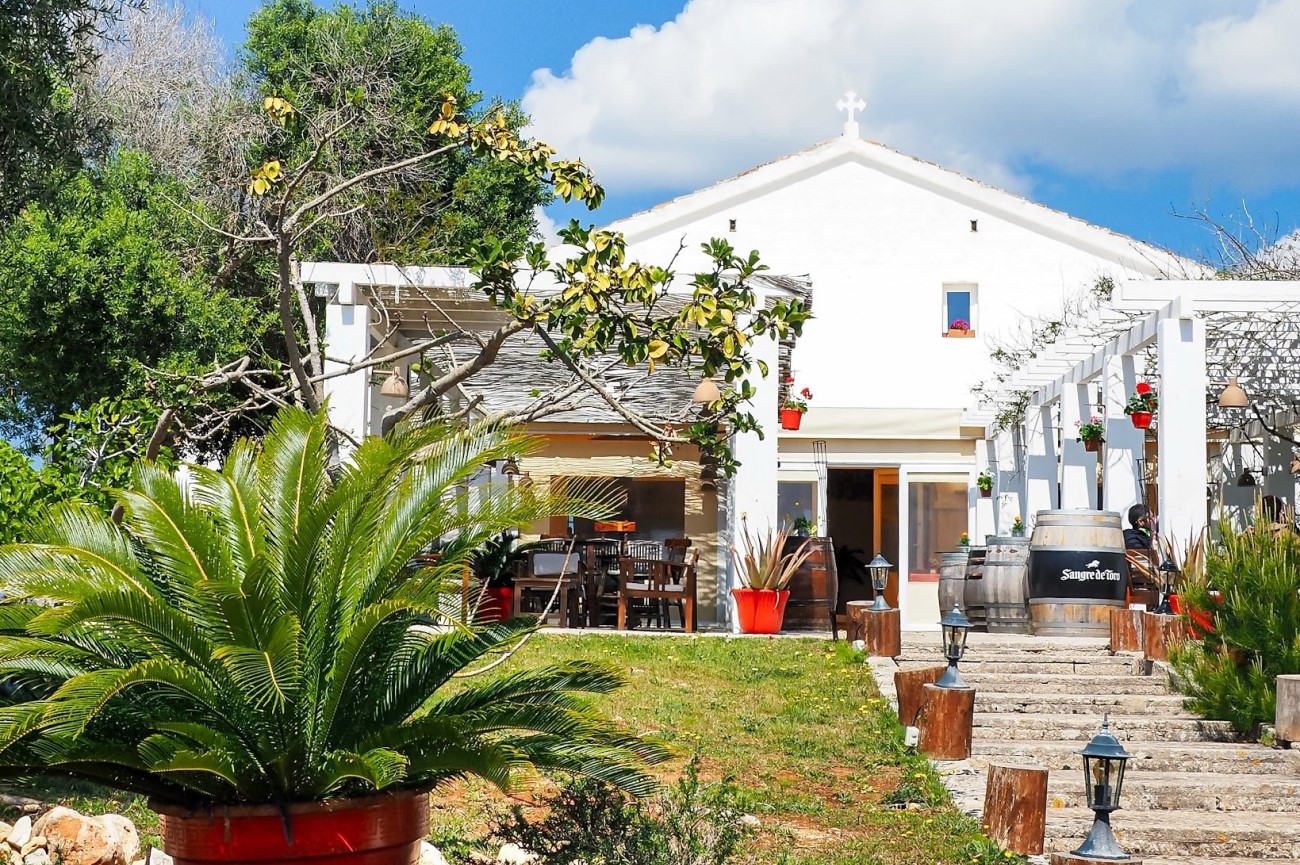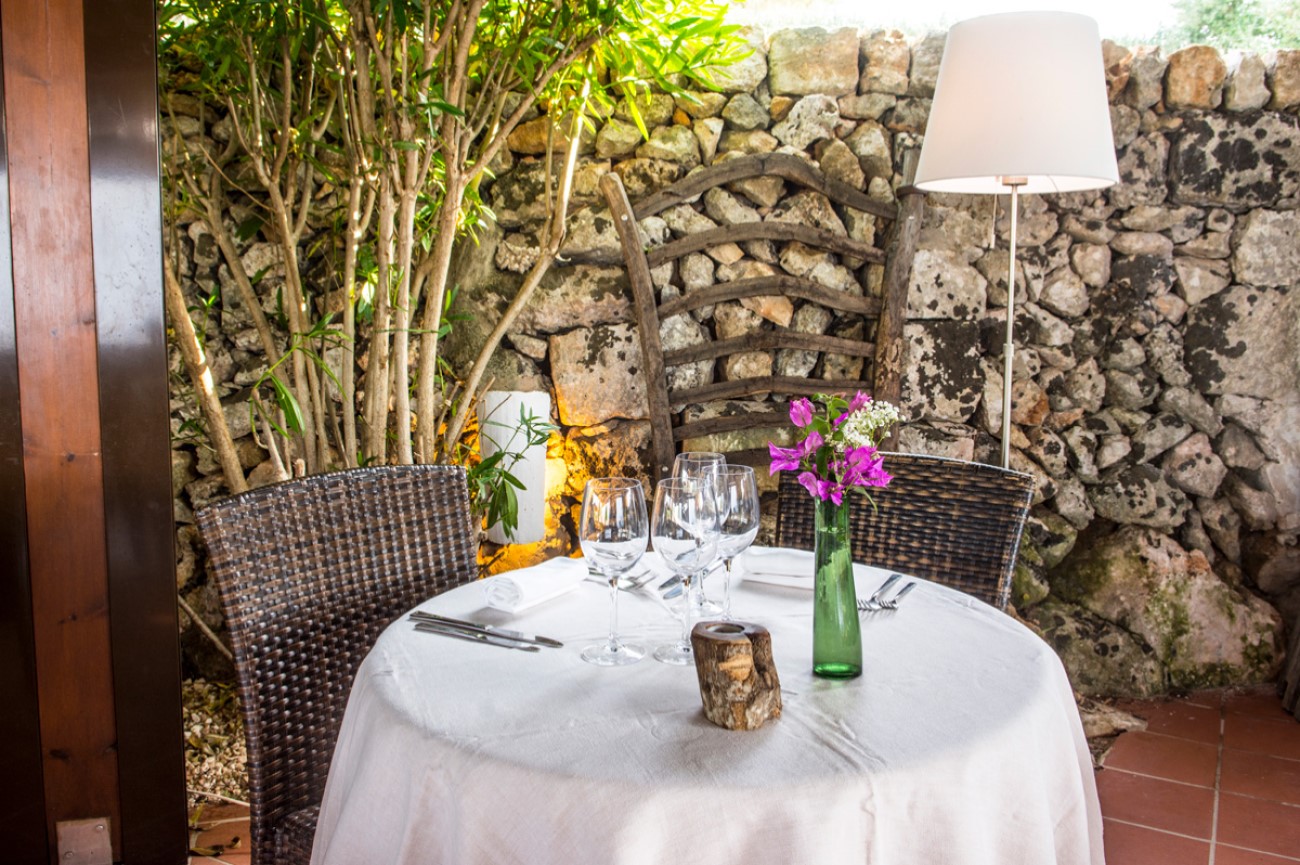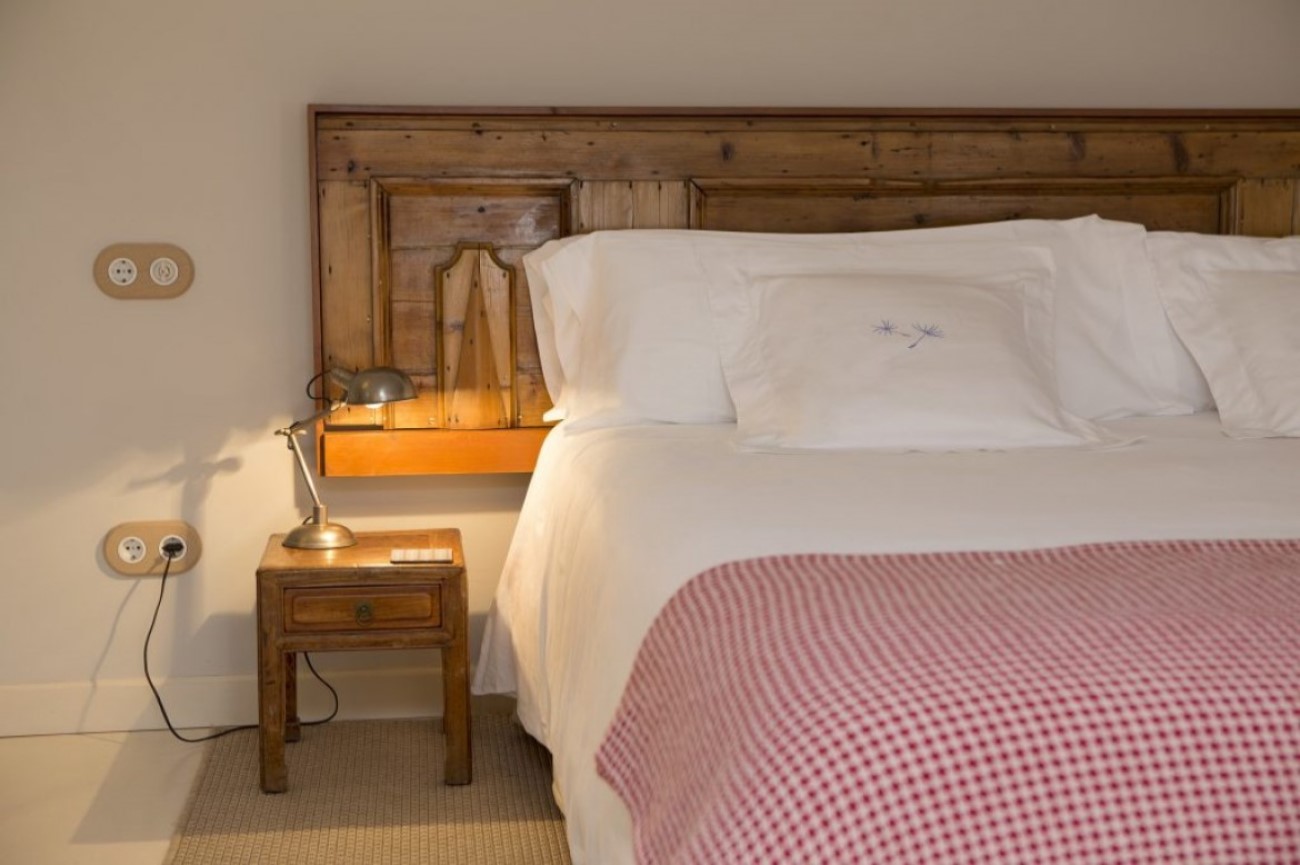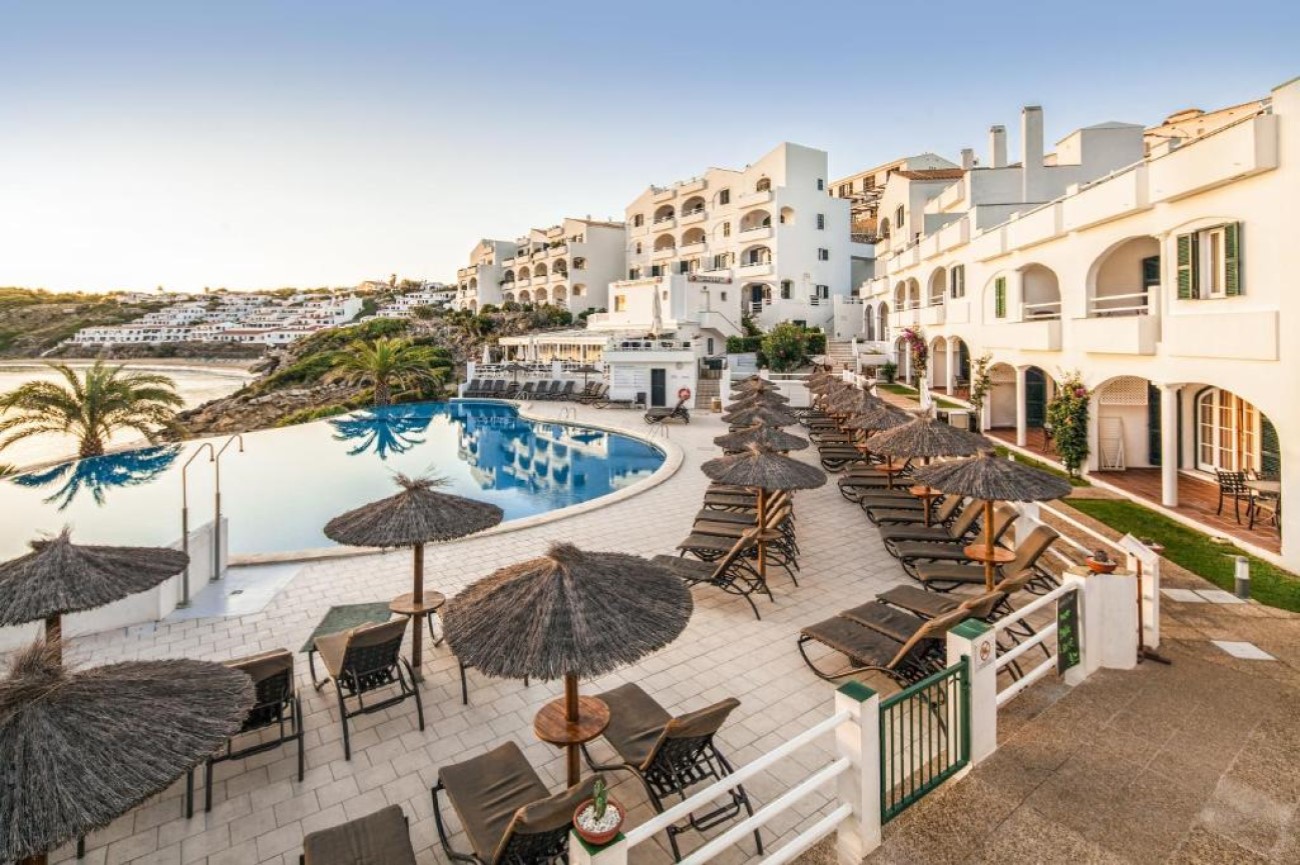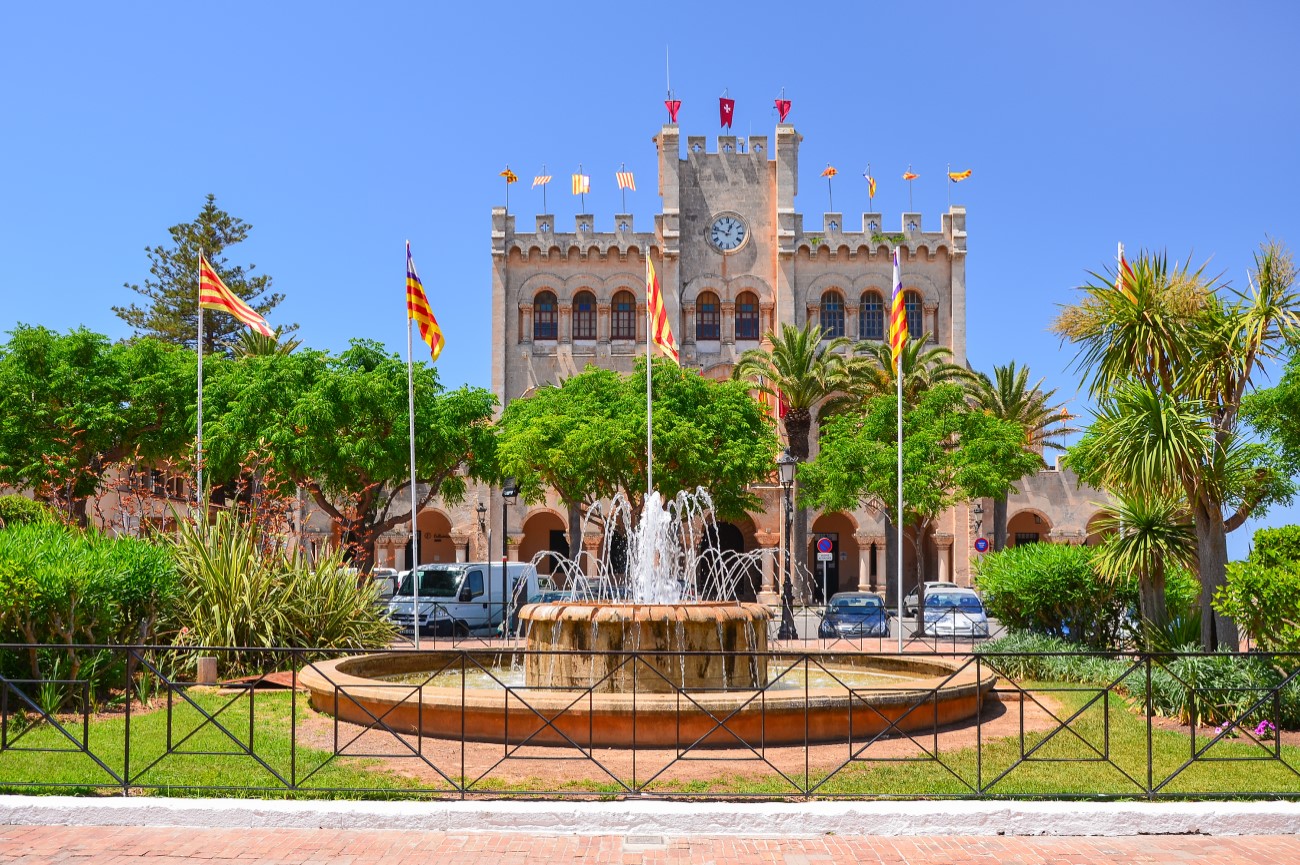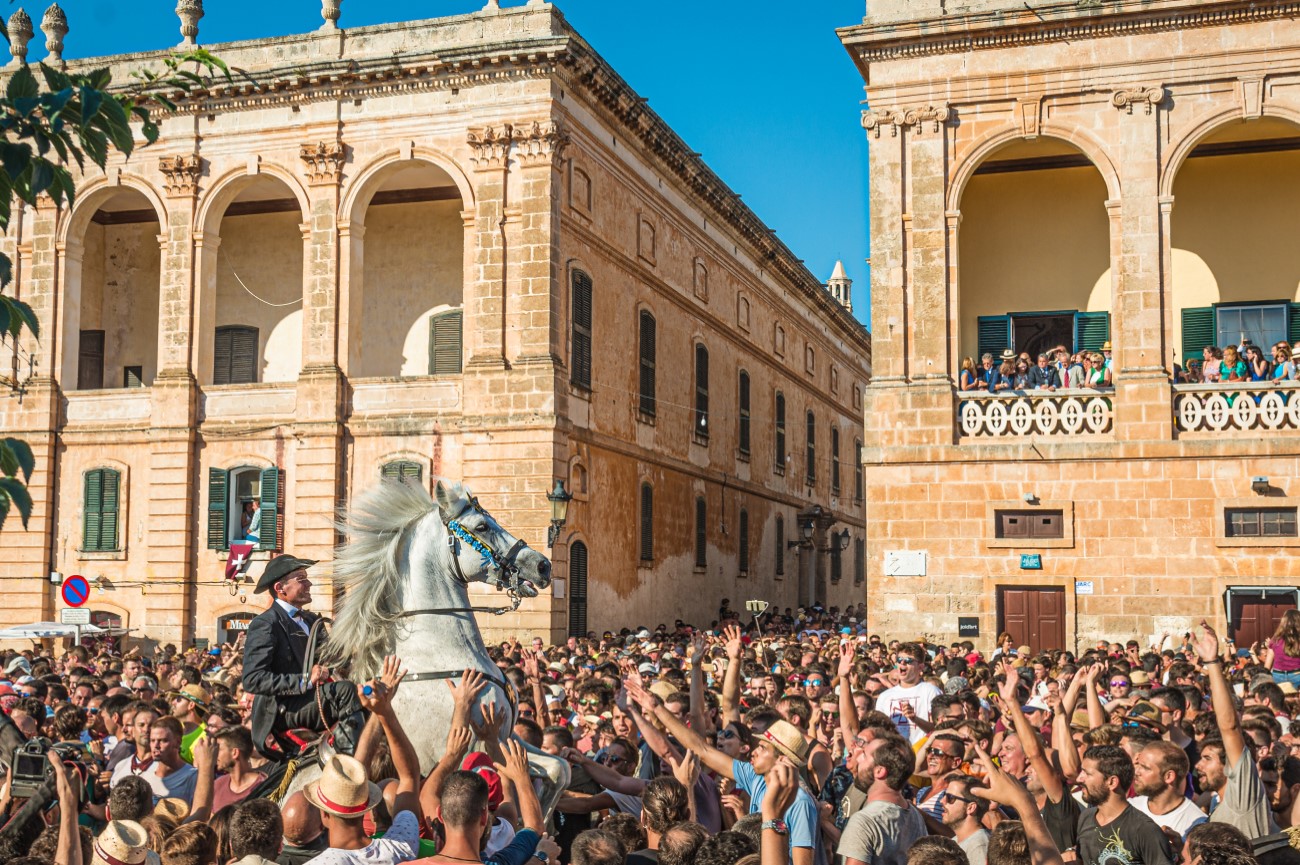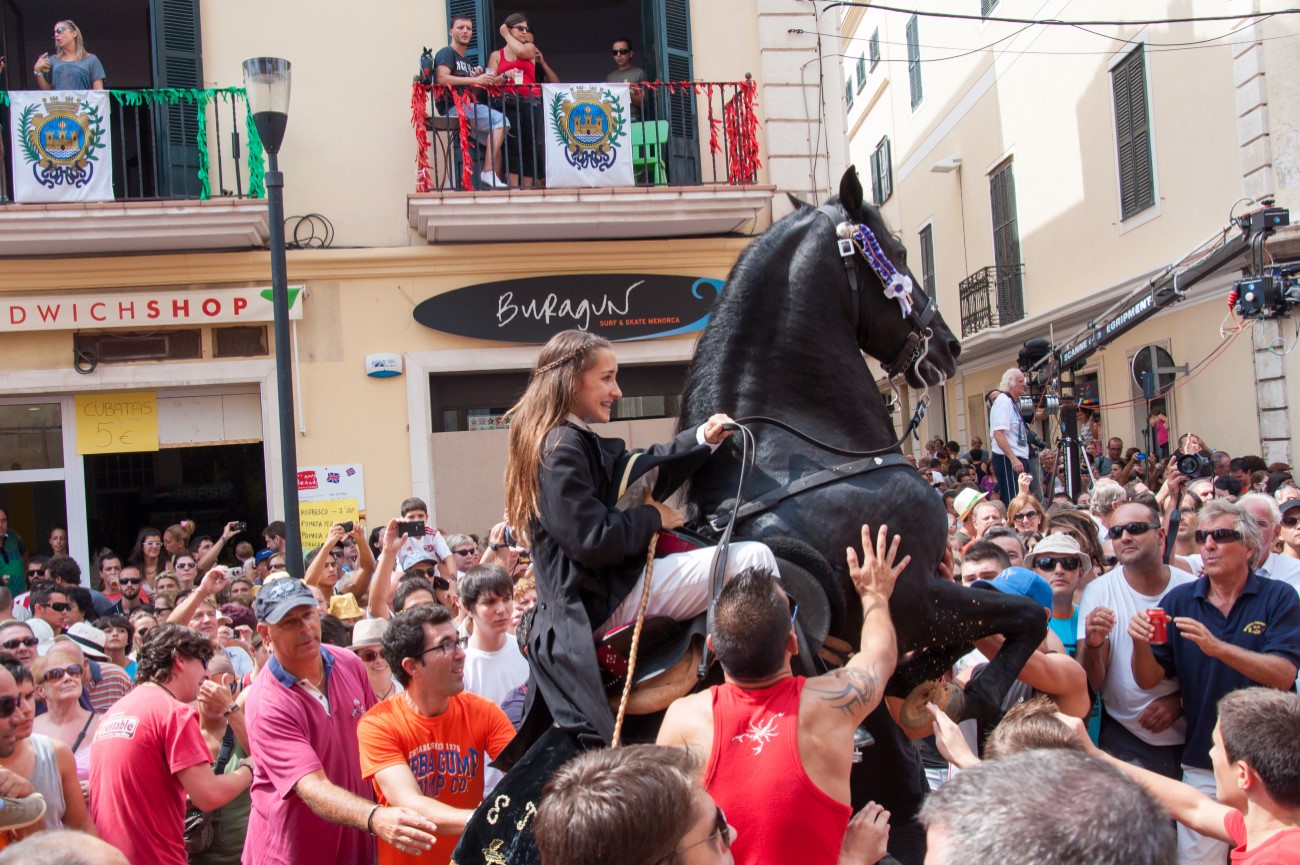Things to do in Menorca, Spain: 3-day itinerary
Menorca feels like the quiet sister of Ibiza and Majorca, with its low-key atmosphere and rural setting. You’ll still find all of those paradisiacal beaches bathed in turquoise waters but with fewer crowds than its neighbouring Balearic Islands.
Beyond the golden bays are charming small villages, little-known vineyards and stunning natural wonders. Menorca was declared a Biosphere Reserve by UNESCO, and you’ll understand why when you explore places like the Parc Natural S’Albufera des Grau. The historic city centre also deserves a visit, with its old fortresses and narrow cobblestone streets.
Our 3-day itinerary below has the best things to do in Menorca to help you organise your trip. You’ll find all the main attractions, but also recommendations of where to eat and where to stay.
Day 1 - East & South

Morning: Mahón
As the capital of Menorca, Mahón is the best place to begin your tour of the island. It houses the biggest natural harbour in the Mediterranean, taken over by many empires, from the Romans to the French. This explains the mix of architecture styles you’ll find throughout the city.
It’s easy to explore Mahón on foot and see all of its main attractions. We recommend starting at the Santa Maria Church. There’s been a religious site here since at least the 14th century, but the building you see today dates back to 1748. Its bell tower can be spotted from all over the city.
Just a few steps from the church, you’ll find the Town Hall with its striking neoclassical façade.
Then head towards the Pont De Sant Roc, a stone gate that was once part of the city’s medieval walls.
You can end your visit with a free tour of the Museum of Menorca. Set inside a Baroque convent, the museum tells you everything about Menorca’s history, with a prestigious collection of archaeological items from the Talaiotic, Roman, Byzantine and Islamic eras. You’ll also see historical maps, sculptures and other art forms spread across multiple floors.
Fort Marlborough
The imposing Fort Marlborough stands on the southern end of Mahón’s harbour. It was built in the 1720s, by the British, with a particular purpose: to protect the city and its port. During the 18th century, part of the fort was destroyed, but it was later rebuilt. While in the area, you get the perfect sense of the island’s military history. Visitors have the chance to witness siege re-enactments with special effects and uniformed soldiers. You can walk through the tunnels and rock-carved rooms while admiring the views of the Cala de Sant Esteve, as well as the remains of the Castell de Sant Felip and the Torre d’en Penjat.
Afternoon: Binibeca
The fishing village of Binibeca is only a short ride from Mahón. It has less than 200 residents, and while it looks old, it was actually built during the 70s. Spanish architect Antonio Sintes Mercadal created this Moorish-style village full of narrow lanes and whitewashed houses. Make your way to the Plaza Mayor, where you’ll find the village’s main church. From here you can wander around the centre or head towards the sea. The calm bay close to the harbour is perfect for snorkelling as the water is quite shallow. You’ll see many fish hiding between the rocky formations.
Cala Binidali
Just a few miles from Binibeca, you’ll find Cala Binidali, a tiny beach where you can go for another dip. It’s not as famous as other places on the island, which means you’ll often have it all to yourself. The only downside is that there’s only a small sandy section to lay on.
Torralba d'en Salort
From the beach, take a detour to visit the archaeological site of Torralba d'en Salort, a well preserved Talayotic village located around 13km northwest of Mahón. As soon as you arrive, you’ll notice the colossal stone monument known as taula. You’ll also spot Bronze Age megaliths, various caves, plus old pillars and walls made of boulders. Archaeologists believe that this place was occupied from 1.000 BC until the Roman occupation. Ancient settlements like these can be spotted all over the island. Trepuco, for example, is another important site, which is considered Menorca’s prehistoric capital.
Cala en Porter
From Torralba d'en Salort, drive back to the coast towards the Cala en Porter, one of Menorca’s most beautiful coves. The white sand beach and crystal waters are protected by massive cliffs, making it the perfect spot to sunbathe while being sheltered from the wind. The beach shares its name with the surrounding village, home to several restaurants and bars.
Cova d’en Xoroi
Welcome to one of the most photographed spots of the inland. Even though Menorca isn’t known for its nightlife, Cova d’en Xoroi is the place to go if you’re looking for a livelier evening. Perched on a cliff, this bar is one of the island’s best sunset spots. Book a table if you want to watch the spectacular natural show on the terrace overlooking the ocean and then continue the party in the disco grotto. Don’t leave without ordering the Pomada, Menorca’s signature cocktail made with gin, lemonade, ice and a lemon slice.
Day 1 - Menorca East & South Tour Map
Day 2 - West & South

Morning: Wine tasting at Binitord Bodega
Spend your morning touring one of the many wineries around Menorca, like Binitord Bodega. Located around 6km from the village of Ciutadella, this family-run winery occupies a deactivated quarry and follows sustainable practices. It produces a handful of wines, including white, red and rose, plus a delicious artisanal vermouth.
Ciutadella
After the wine tasting at Binitord, make your way up to the centre of Ciutadella. Also known as Vella i Bella (“Old and Beautiful”), this charming village was once the island’s capital. It was founded by the Carthaginians and nearly destroyed during the 1558 Turkish invasion, but most of it was rebuilt around the 17th century.
It’s a perfect place to walk, as the streets are almost traffic-free. Take a moment to wander through the historic centre, passing through the Plaça des Born and Plaça de s'Esplanada. Make sure to visit the Catedral de Santa Maria, a 14th-century church displaying a mix of Gothic, Baroque and Neoclassical elements. Then head down to the Castillo de San Nicolás for the best views in town or towards the harbour, where you’ll find many souvenir shops.
Pedreres de s’Hostal
On the outskirts of the Ciutadella is the Port Lithica, also known as Pedreres de s’Hostal. This ancient limestone quarry is now famous for its labyrinths and botanical garden created between the rock formations. It often welcomes events, like exhibitions, workshops and concerts.
Naveta d’es Tudons
Not far from Lithica is the Naveta d’es Tudons, a stone burial chamber constructed around 1000 BC. It’s located 6km east of Ciutadella, and it’s a fascinating spot for history buffs as it’s one of the most iconic megalithic sites on the island.
Afternoon:Cala Galdana
Spend the afternoon exploring Menorca’s south coast. Start with Cala Galdana, a popular beach resort backed by hotels and lush green hills. You can spend the day relaxing by the sand, but if you prefer something more active, you can walk along the promenade or go kayaking. From here, you can hop on a boat trip to discover the nearby coves of Cala Macarella, Cala Mitjana and Cala Turqueta. This last one is an ideal spot for snorkelling or cliff jumping.
Es Migjorn
The next stop is Es Migjorn, a rural village dating back to the 18th century. Like other towns on the island, the houses here are mostly painted white, but you can see a few red or blue façades dotted around. It’s one of the most peaceful towns in Menorca, with very few residents (mainly musicians and artists). You can stay around the centre, where you’ll find the Sant Cristófol church or follow the path to the Platja Binigaus if you’re up for a seaside hike.
Torre d’en Galmés
Menorca is full of Talayotic sites, but this is perhaps the most famous and best-preserved monument of that era. Start off at the information centre to understand the history of this place, then head outside to admire the overall scenario of dwellings, religious buildings and megaliths.
Es Mercadal
Continue driving to the centre of the island to visit Es Mercadal. This small village is famous for its quiet atmosphere and striking monuments such as the San Martín Renaissance Church and the Cap de Cavallería Eco-Museum. Every year around July, the town welcomes the San Martín fiestas. That’s when the streets come alive with music and traditional activities. If you visit during this time, don’t miss the jaleo, an event where horses dance to the sound of music. While you’re here, make sure to try some of the region’s famous sweets and desserts, like the amargos and crespellines (almond biscuits).
Monte Toro
From Es Mercadal, you can easily head up to Monte Toro, the highest mountain on the island. You can drive there or park in the city and then cycle or hike to the top. Once you reach the peak, you can’t miss the Santuario de la Virgen de Monte Toro, an imposing sanctuary that has been a pilgrimage site for decades. The panoramic views from here are truly unbelievable, as you can see nearly the entire island. Before you go, you can sit at the nearby café and recharge for a bit.
Day 2 - Menorca West & South Tour Map
Day 3 - North & East

Morning: Cala Pregonda
Start your last day in Menorca with a picnic at one of the most beautiful beaches on the island. Cala Pregonda is an isolated cove on the north coast featuring a mix of yellow and red sand. It’s a 30-minute hike from Binimel, but if you don’t fancy walking there, you can also take a boat. Whichever way you get there, the journey is well worth it.
Fornells
Continue along the coast towards Fornells, another one of Menorca’s whitewashed villages. It’s a pleasure to walk around its tiny port or hop on a sailing boat from here. This fishing town is also famous for one of the region's delicious treats: the Menorcan lobster stew. If you're a seafood lover, you can try this dish at one of the village’s restaurants.
Cheese tasting at Subaida
Besides the wine, Menorca is also renowned for its delicious cheese known as Queso de Mahón. Production has been around for over 1000 years, and it’s in Subaida that you can taste the best cheese. They offer four cheese types: tierno (soft and aged for five weeks); semi curado (firmer and aged for three months); curado (firmer and aged for six months); and añejo (very similar to parmesan, cave-aged for 18 months). Guided tours include a visit to the farm and a cheese tasting.
Afternoon: Faro de Favàritx
After visiting Subaida, head east to see the Cap de Favàritx. It’s here you’ll find Faro de Favàritx, a striped lighthouse dating back to 1922. It was constructed after many ships sank around the coast of Menorca, and it’s still functioning to this day. The lighthouse is closed for visits, but it’s still worth coming here for the views.
S'Albufera des Grau Natural Park
Watching the sunset from S'Albufera des Grau is one of the most wonderful sights in Menorca. This natural park extends for more than 5.000 hectares and is home to some impressive fauna and flora. It's the heart of the island’s Biosphere Reserve, featuring a lagoon, dunes, small islands and many olive groves. Once you get there, you'll notice three signed routes leading to wild beaches or back to the lighthouse. If you want to learn more about the area, you can request a guided tour at the Information Centre.
Cala Tamarells
Still on the east coast and very close to Es Grau, you’ll find the peaceful Cala Tamarells. It can be a bit challenging to get to this beach, so come prepared with proper shoes. It’s one of the must-stop locations on the Camí de Cavalls hiking trail, but you don’t need to walk it to visit the site.
Fortaleza de la Mola
Finally, make your way to the Fortaleza de la Mola. This military fortress was erected in the 19th century to prevent the British from reoccupying the island. You can still visit the old arms stores and walk through the secret underground passages. Outside, it's hard to choose the best viewpoint, as all of them offer unique views over the coast.
Day 3 - Menorca North & East Tour Map
Other things to do in Menorca
- Museo Militar de Menorca: Located inside 18th-century barracks in Mahón, this museum tells the story of the island’s military past. It explains the different occupations of the island and includes a collection of items, from guns to ancient cannons.
- Binissues Museum: Discover what it was like to live in Menorca in the 17th century with a visit to the Binissues Museu. You’ll learn about the island’s old traditions, from cheese-making to animal husbandry, and admire a collection of ancient earthenware and other historical tools. Don’t leave without checking the Natural Science Museum, which includes around 8000 exhibits of worldwide species.
- Water activities: There’s no shortage of water sports in Menorca. Popular activities include surfing and stand up paddle. If you’re planning to do any of these, the beaches around Fornells are always a good bet. You could also book a kayak tour around Es Grau and discover some of the island’s hidden coves. Alternatively, you could sail around Cala Galdana or hire your own boat and explore on your own. If you do decide to do this, make sure to keep an eye on the weather. And, of course, to see the island’s marine life up close, there’s nothing like snorkelling or a scuba diving trip.
- Hiking: Hiking is another thing you can’t miss while visiting Menorca. There are several trails to follow, but the most popular ones are the Canyon of Algendar and Camí de Cavalls. The Algendar route begins at Ferreries and, from there, it’s a narrow trail down a deep limestone gorge. The views are superb, and if you’re lucky, you might catch a glimpse of the pine martens that live around here. The trail of Camí de Cavalls goes around the island’s coast. It includes around 20 paths that take you down to secluded beaches, passing through striking cliffs and pine forests. These routes are also popular among cyclists. If you’re looking for something a bit different, you could also book a horse-riding tour.
Top things to do with kids in Menorca
Menorca is the perfect destination for families, especially if you like spending time by the beach. The shallow water makes it easy for kids to swim around, and there are several hotels with swimming pools and plenty of fun activities.
As a biosphere reserve, Menorca has diverse sea life. This includes dolphins, sea turtles and sperm whales. Some can only be spotted briefly throughout the year, while others are more common. You could take the kids on a boat trip to try and spot these or go snorkelling and discover the smaller creatures of the island. If your family likes horse riding, you can book a tour and ride together along the coast. Younger kids can enjoy a pony ride in the stables. Other attractions include the Lloc de Menorca, a small zoo with horses, birds, reptiles and lemurs.
Summer is the perfect time to enjoy the island’s water parks. Favourites include Splash Sur Menorca, Aqua Center and Aquarock Waterpark. Alternatively, you can visit Castillo Menorca, an adventure playground with a swimming pool, zip wires, climbing frames and trampolines.
Where to eat in Menorca
Seafood is a big thing in Menorca, especially the traditional lobster stew known as caldereta de langosta. You can find this dish in most restaurants across the island. It’s also common to eat fish meatballs, usually made with cod or scorpionfish. For meaty treats, there’s sobrassada, a cured sausage seasoned with paprika. Together with the delicious Mahón cheese, they make the perfect starter dish. Below are some of the best places to eat in Menorca, where you can sample some of these delicacies:
- Arjau Mao: Close to the Mahón port, this lively restaurant serves a delicious selection of seafood dishes such as paella and lobster cooked in several styles. Don’t leave without sampling the cheesecake for dessert.
- Café Balear: Open since the 70s, this tavern has become a favourite for seafood lovers. Located next to the Port of Ciutadella, it serves freshly caught fish and seafood that they source with their own fishing boat. Order the typical lobster stew or try other dishes such as prawns, razor clams or creamy seafood rice. There's often a queue for tables, so make sure to arrive early.
- Bodega Binifadet: More than a winery, Binifadet also provides a restaurant. It's the perfect place to sample the wine paired with some delicious local dishes, all while overlooking the vineyards.
- Es Forn de Torre Soli Nou: Housed in a century-old building near the south coast, this charming restaurant stands out with its spacious leafy terrace. It specialises in grilled meat, but they also serve pasta and seafood dishes.
- Restaurante Pan y Vino: Patrick and Noelia run this fine-dining restaurant that combines French and Spanish cuisine. The food is top-notch, as is the location on the outskirts of the Sant Lluís village. You could enjoy a meal inside the old cottage, but if you’re visiting in the summer, the terrace is the place to be. The menu is constantly changing, so you never know what to expect.
- Smoix Restaurant: Smoix gives a contemporary twist to the traditional Menorcan cuisine. The restaurant's industrial interior contrasts with the small outdoor patio and its cobblestone floor. Everything on the menu is fresh and sourced locally. You can choose between the tasting menus or order à la carte.
Where to stay in Menorca
- Jardí de ses Bruixes (5 stars): Housed in a traditional townhouse, this small boutique hotel is located right in the centre of Mahón. Most rooms have a fireplace, and some also include a private terrace. Enjoy breakfast on the patio before relaxing in the hotel spa or climbing up to the roof for the best city views.
- Síndic Hotel (4 stars): You can’t help noticing this hotel attached to the Pont de Sant Roc. Its bright yellow façade stands out against the stone walls of the city’s medieval gate. It only has eight rooms, making it ideal for a romantic stay. Facilities include an outdoor pool and a small bar on the terrace where you can stop for an evening drink.
- White Sands Beach Club by Diamond Resorts (3 stars): If you’re looking for a budget-friendly alternative, this beachfront resort on the north coast might be a good alternative. It’s got everything from outdoor pools to a bar and tennis tables. The apartments include a kitchen area where you can prepare meals.
Best time to visit Menorca
Menorca has the typical Mediterranean climate with hot summers and mild winters, which can also be a bit rainy. With that in mind, we would say that the best time to visit Menorca is between May and June or September and October. Temperatures in August are quite high, which might not be ideal if you’re planning to go hiking. It’s also when most tourists come, so expect to find more people on the beach. If you want to get an authentic taste of the island, visit during the “festival months” in June or September when local towns host several street parties.
Menorca Festivals
- Sant Joan: The Fiestas de Sant Joan take place around the 23rd and the 24th of June. There are various celebrations across the island, but the main event is in Ciutadella. The festival includes a religious pilgrimage to Sant Joan de Missa, a lively gathering with horses around Plaça des Born and a hazelnut war, where locals throw kilos of empty hazelnut shells as a symbol of their love for others.
- Festes de la Mare de Déu de Gràcia: Also known as the Fiestas de Gracia, this traditional festival takes over the streets of Mahón in the first week of September. It begins with a proclamation on the 6th of September and continues all the way to the 9th of September with plenty of music and fireworks. Don’t miss the horses dancing around for the jaleo or the races.




